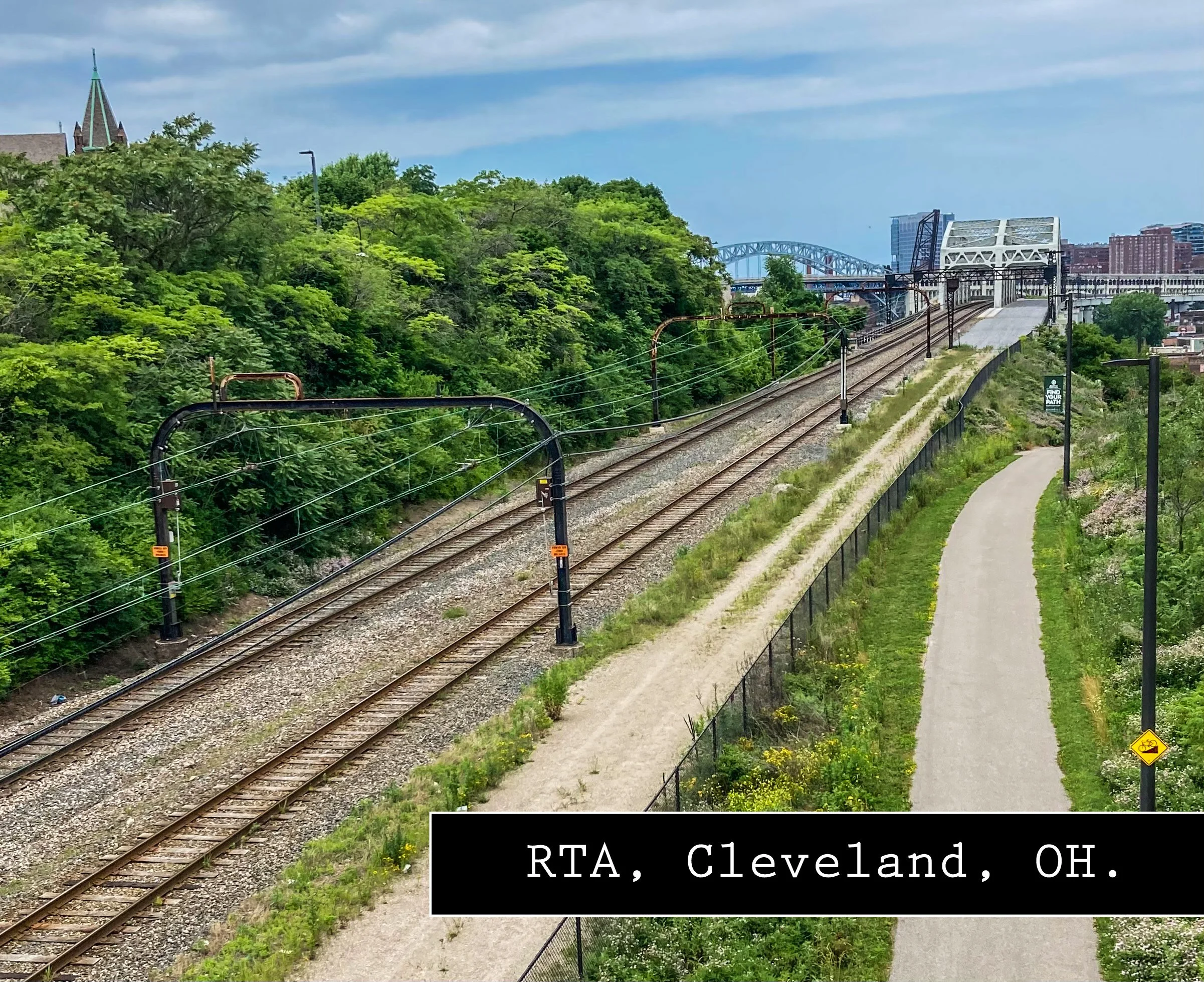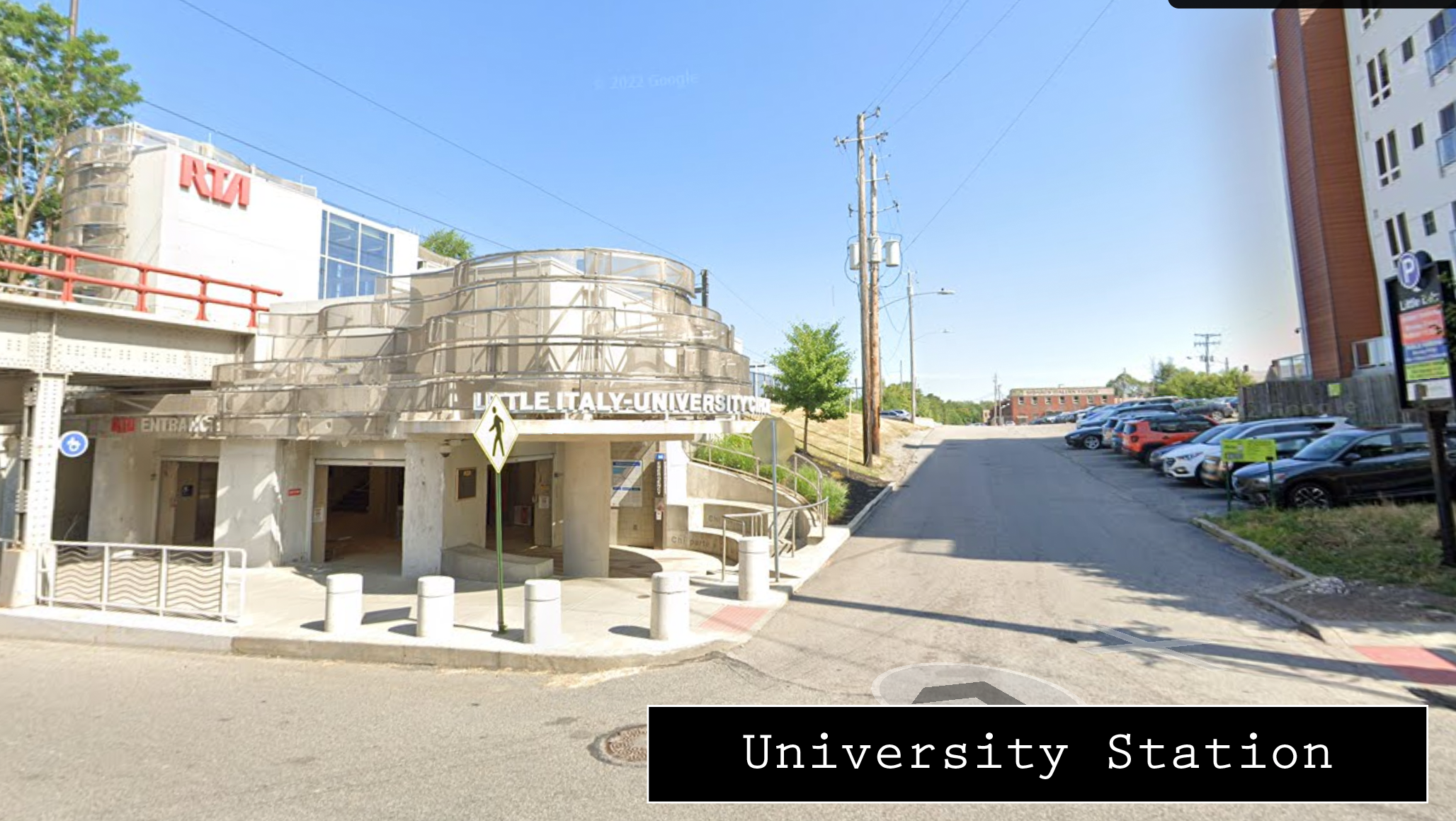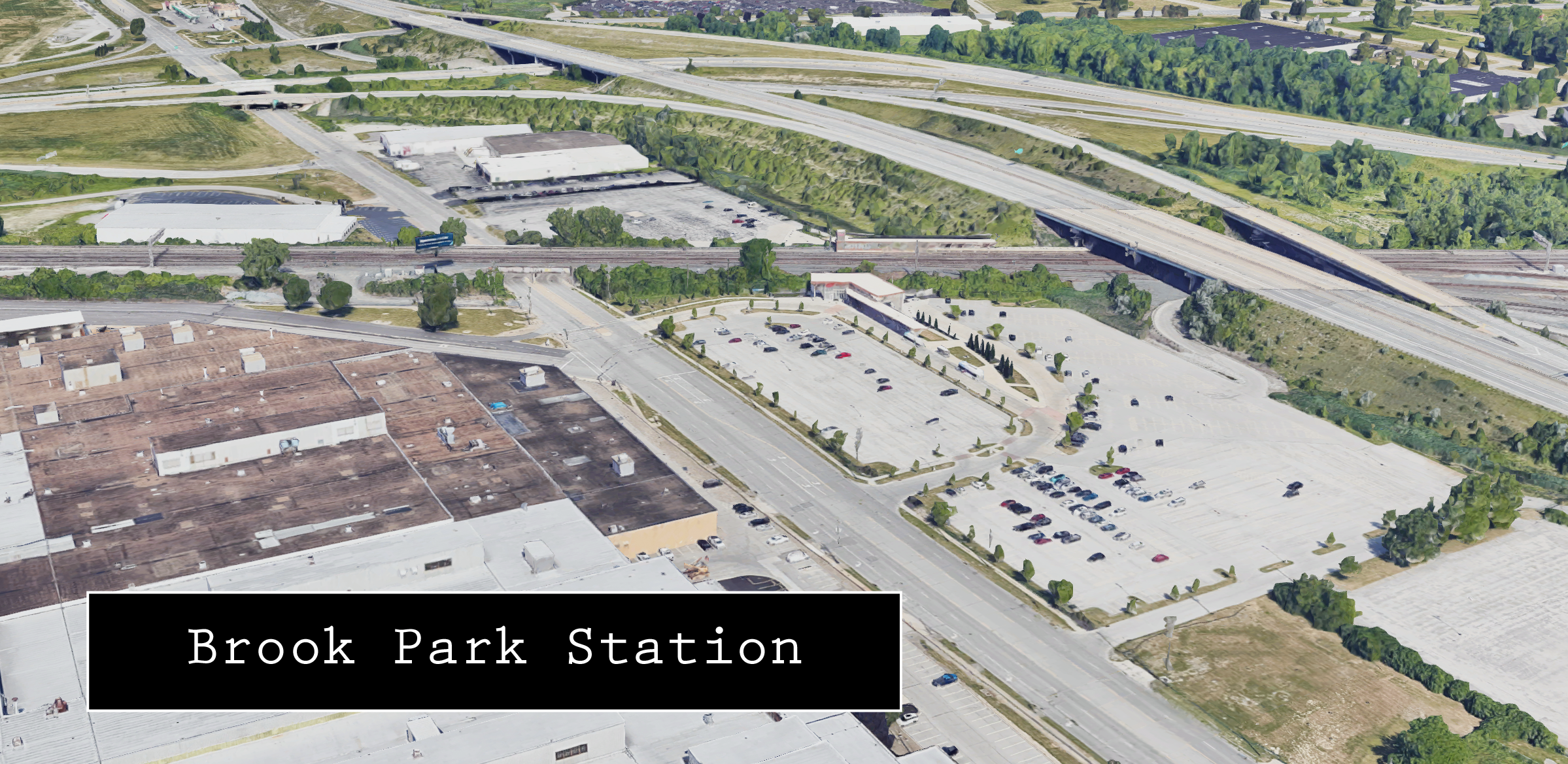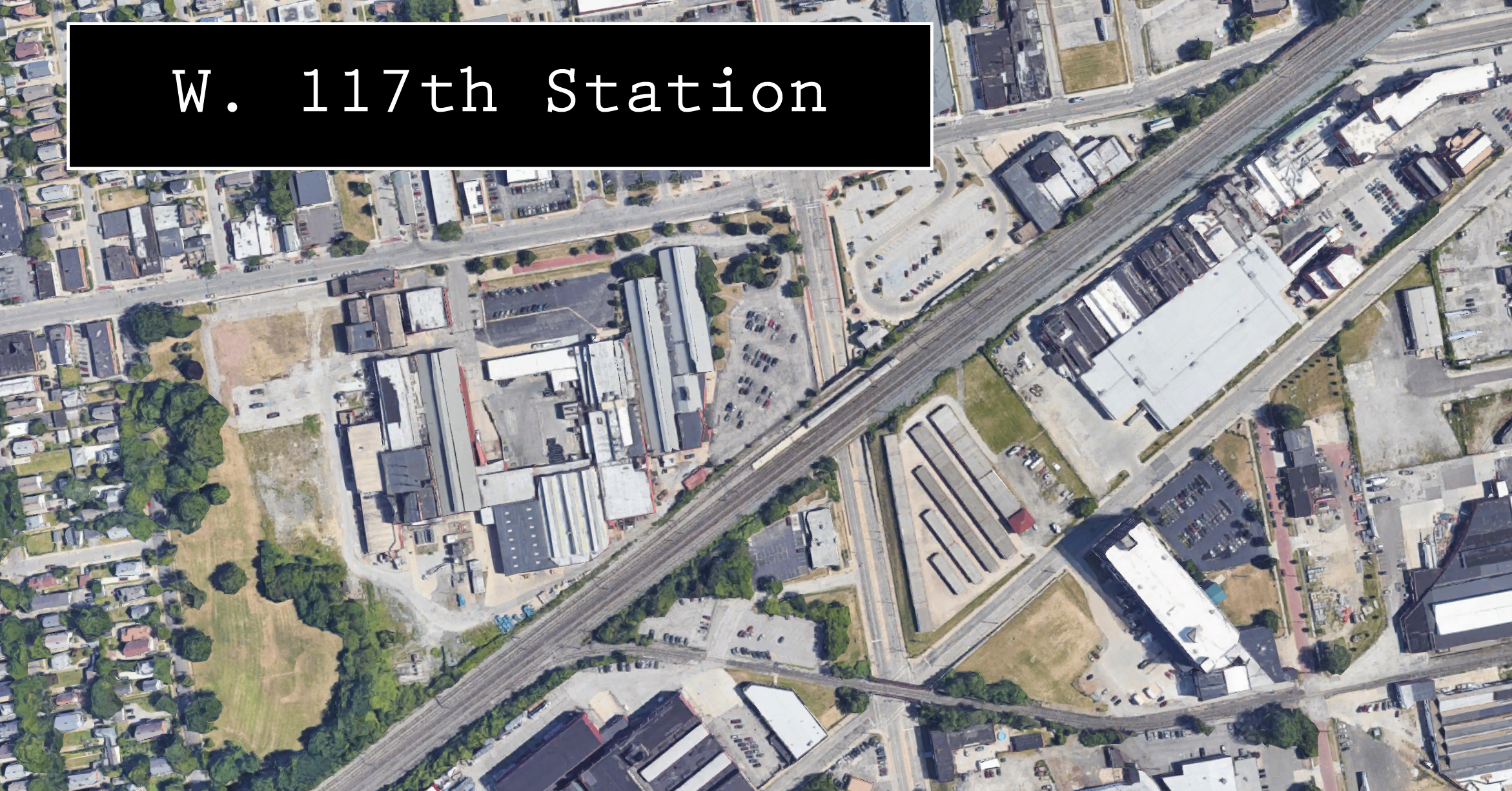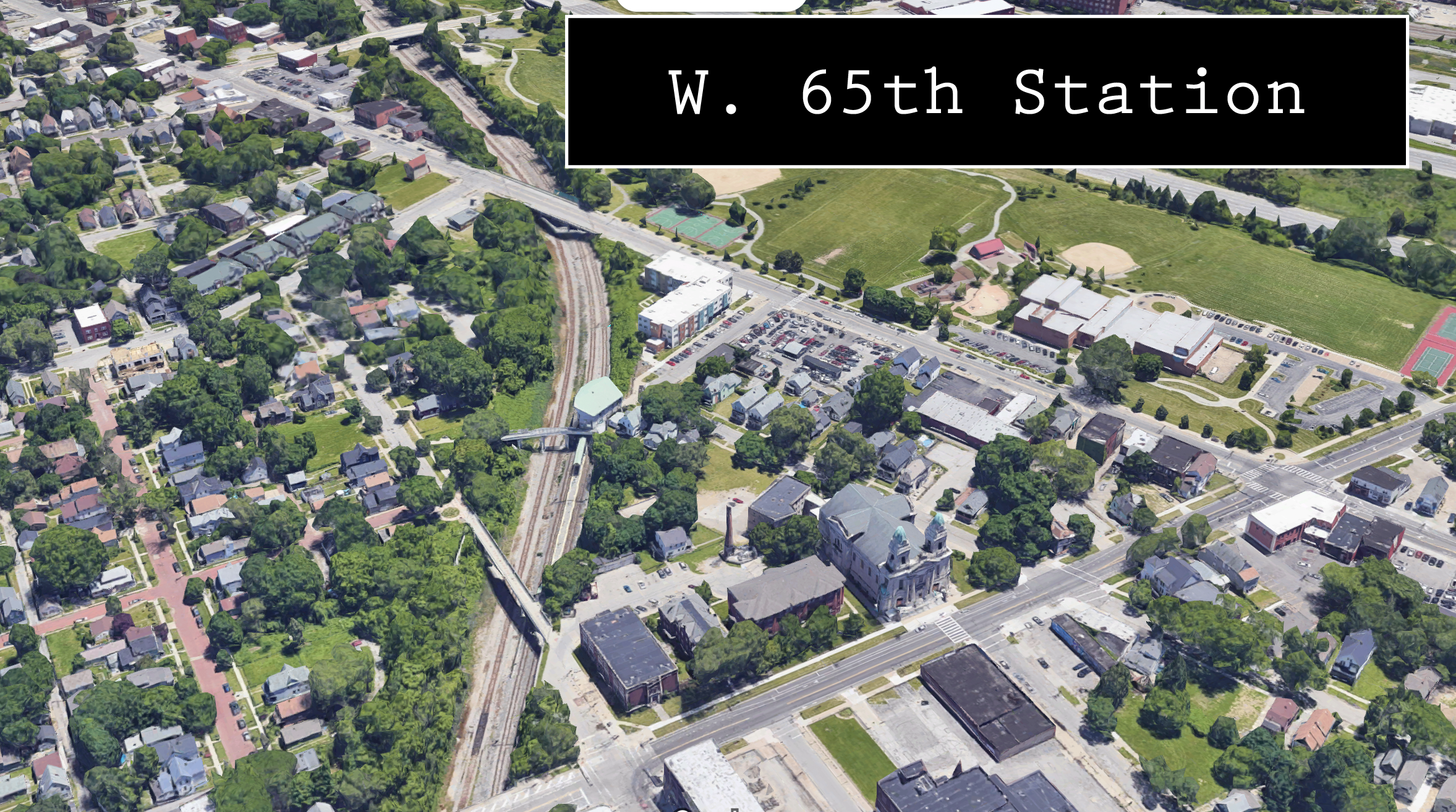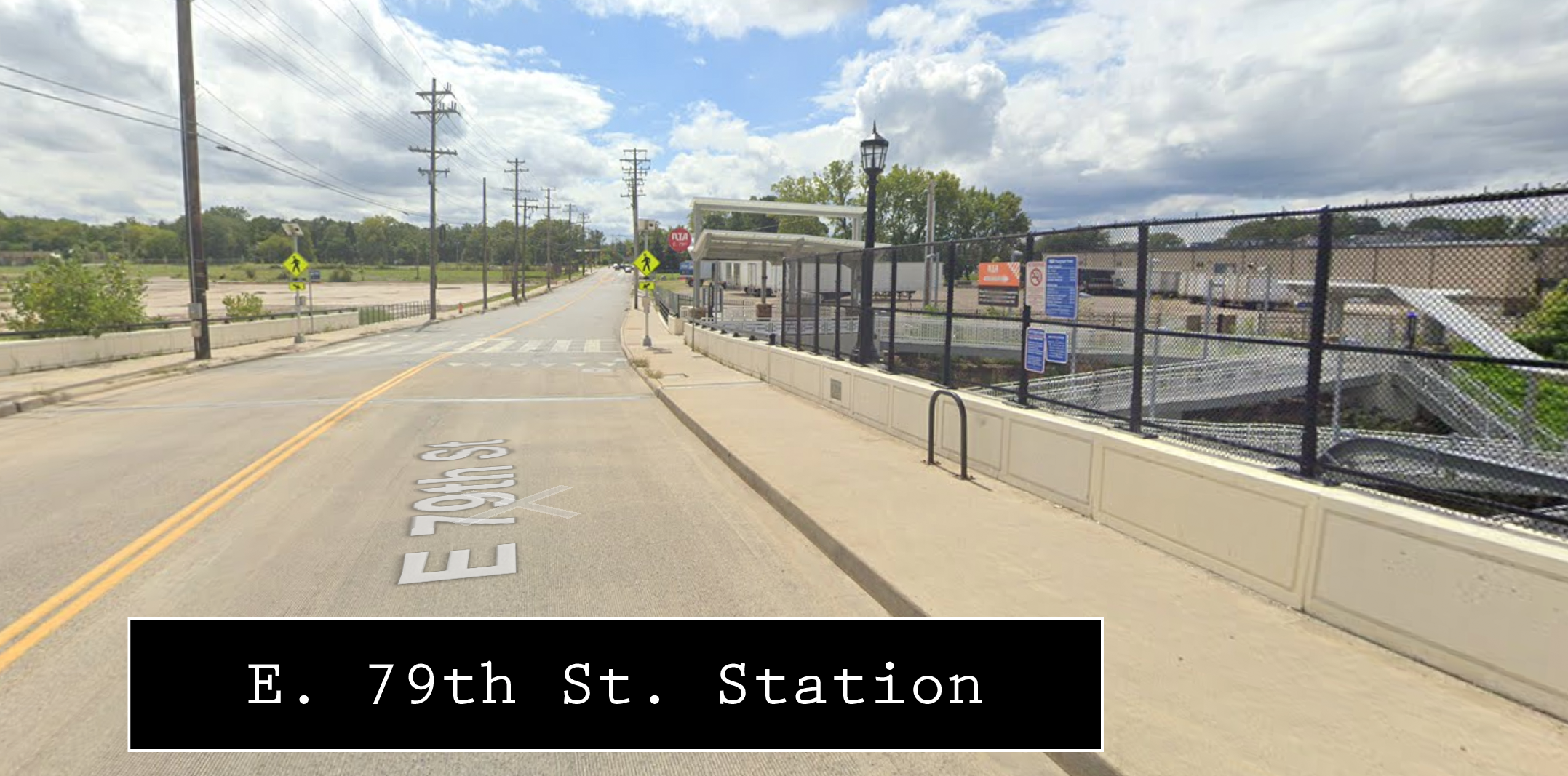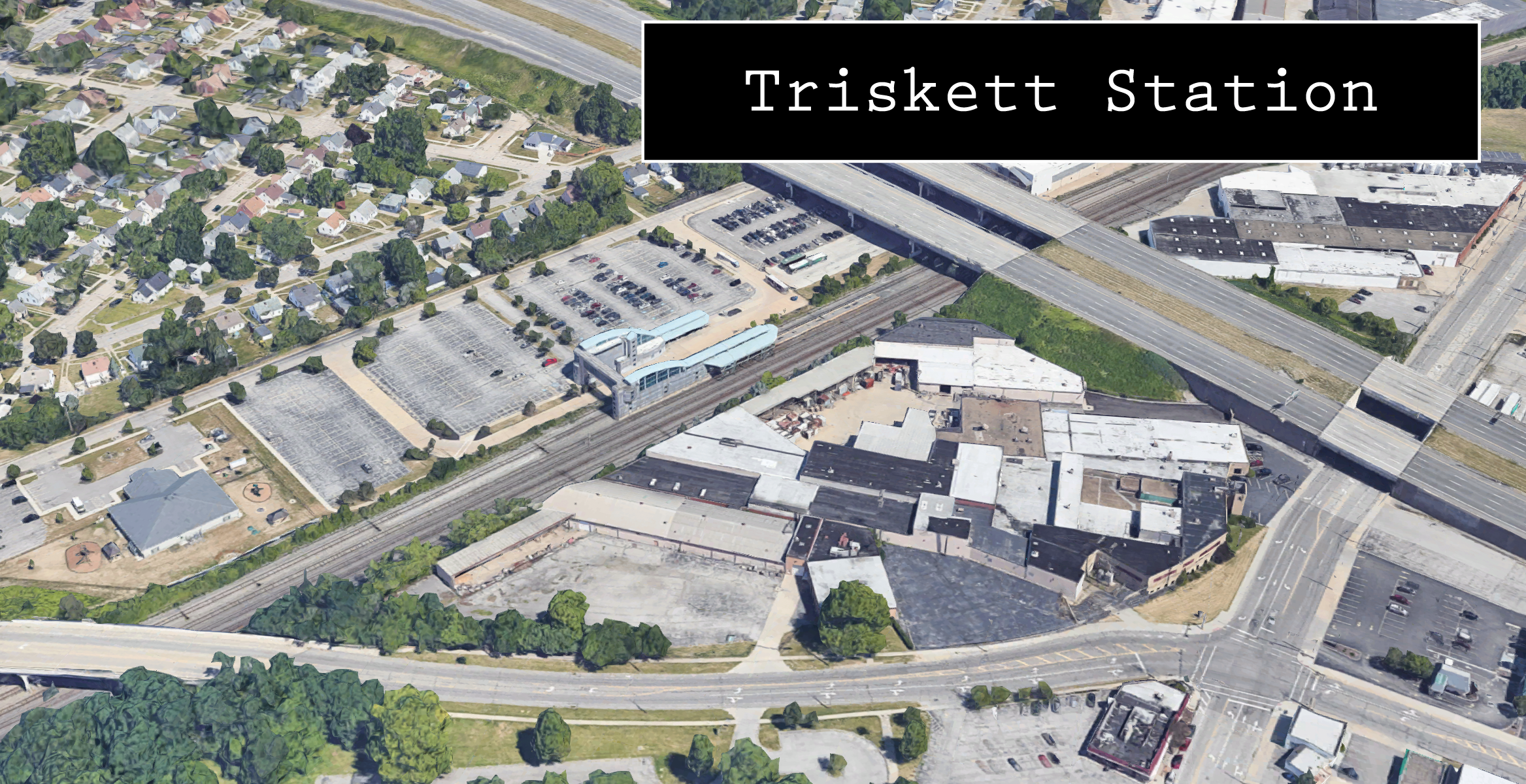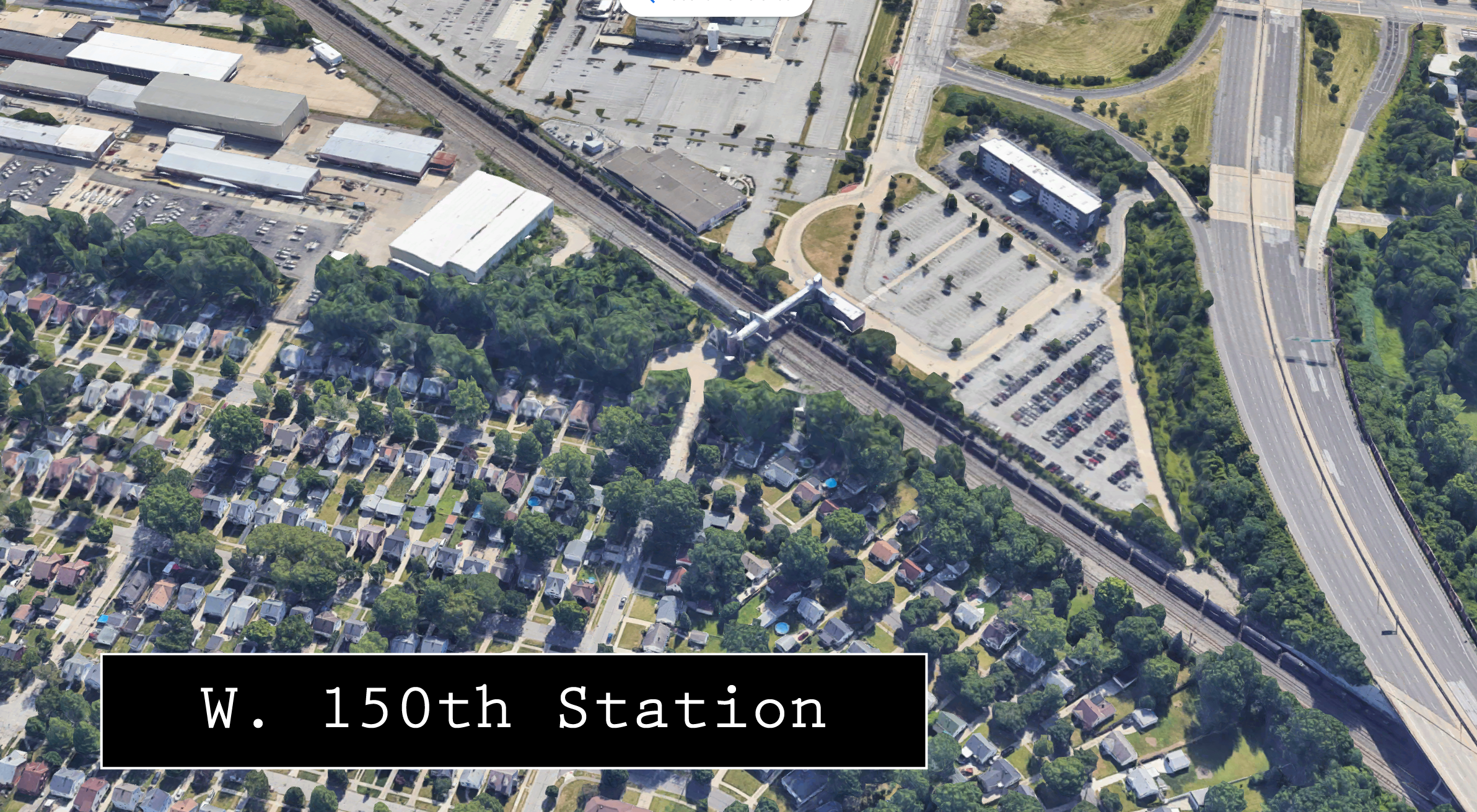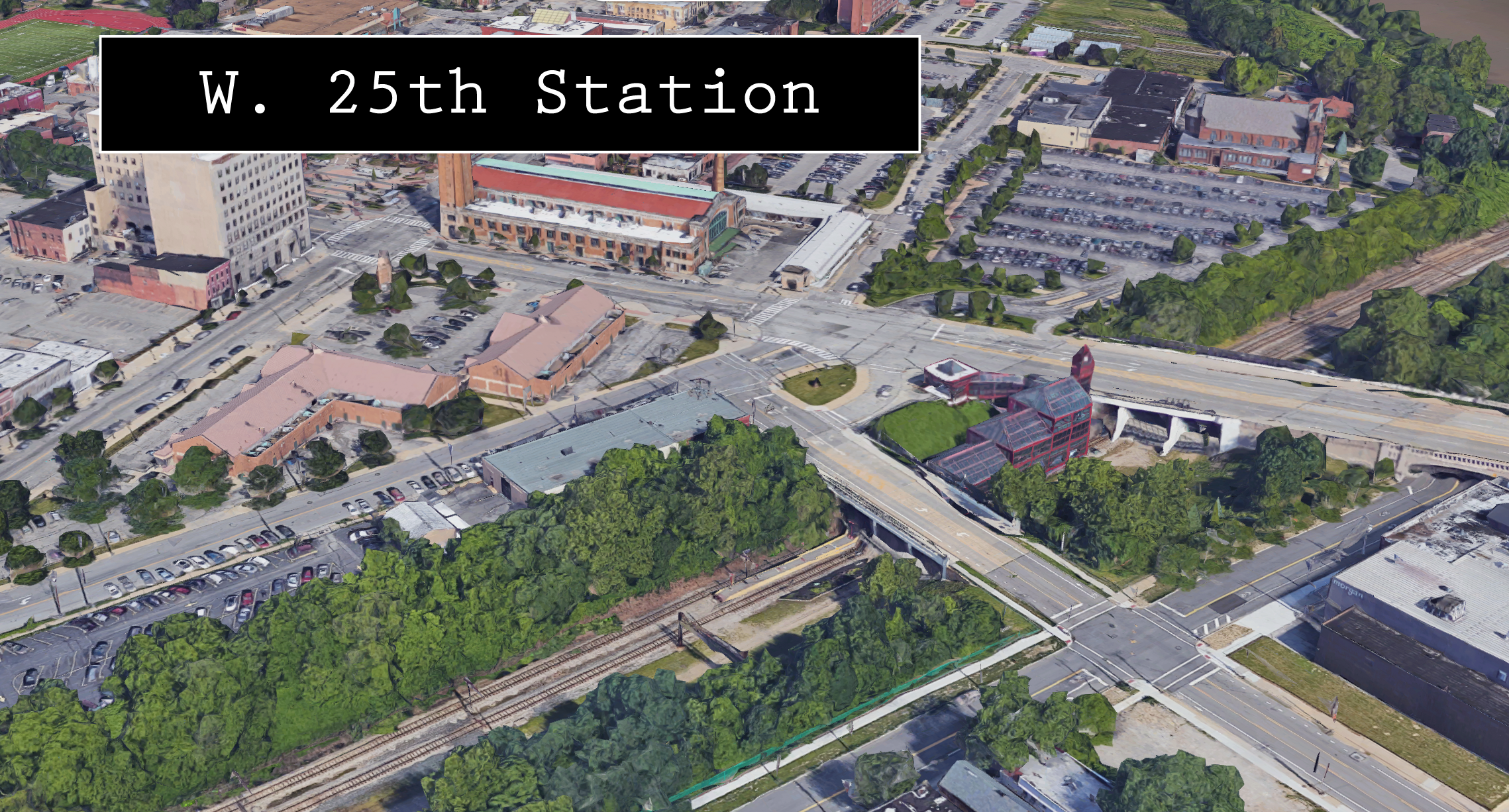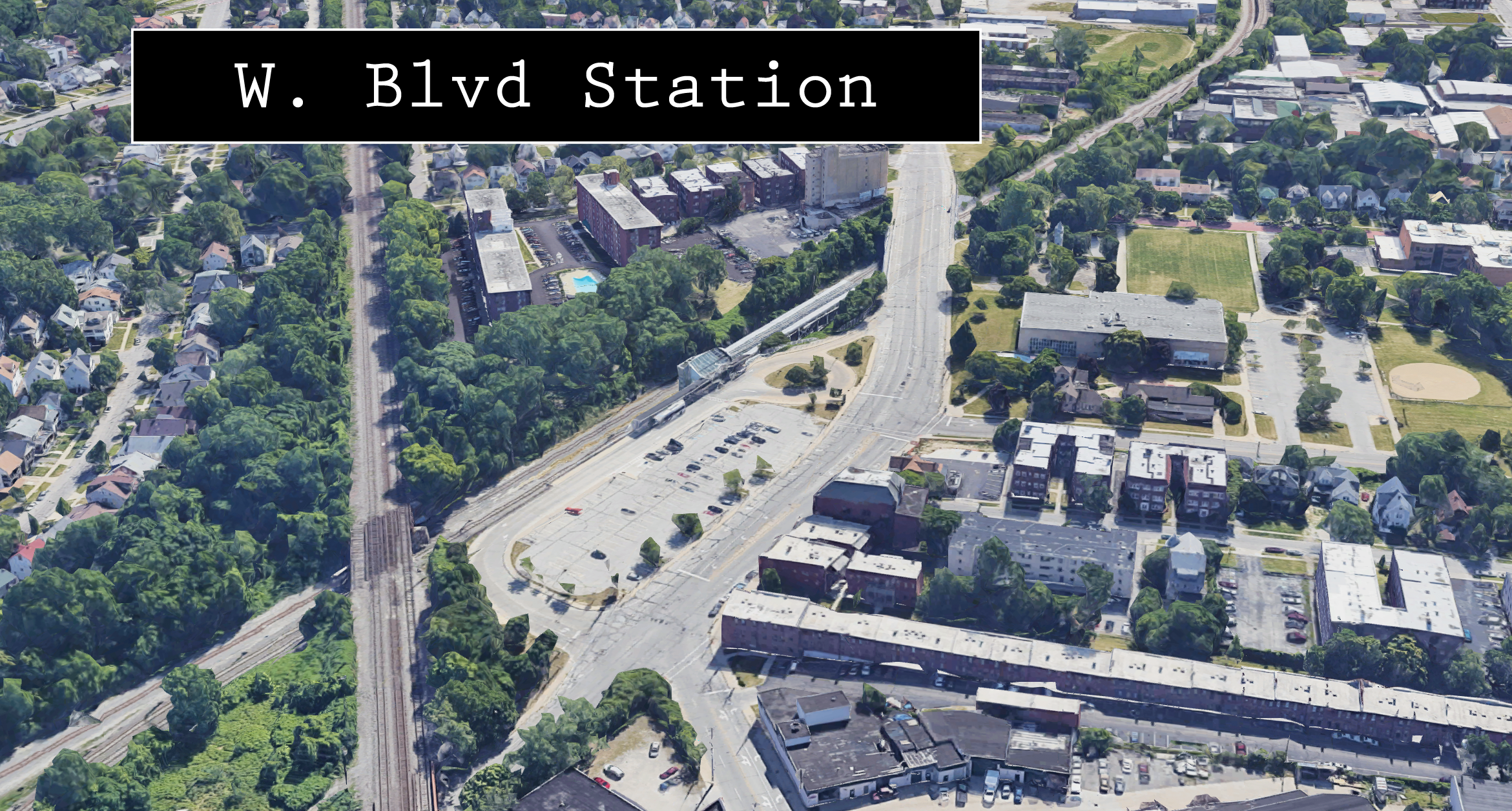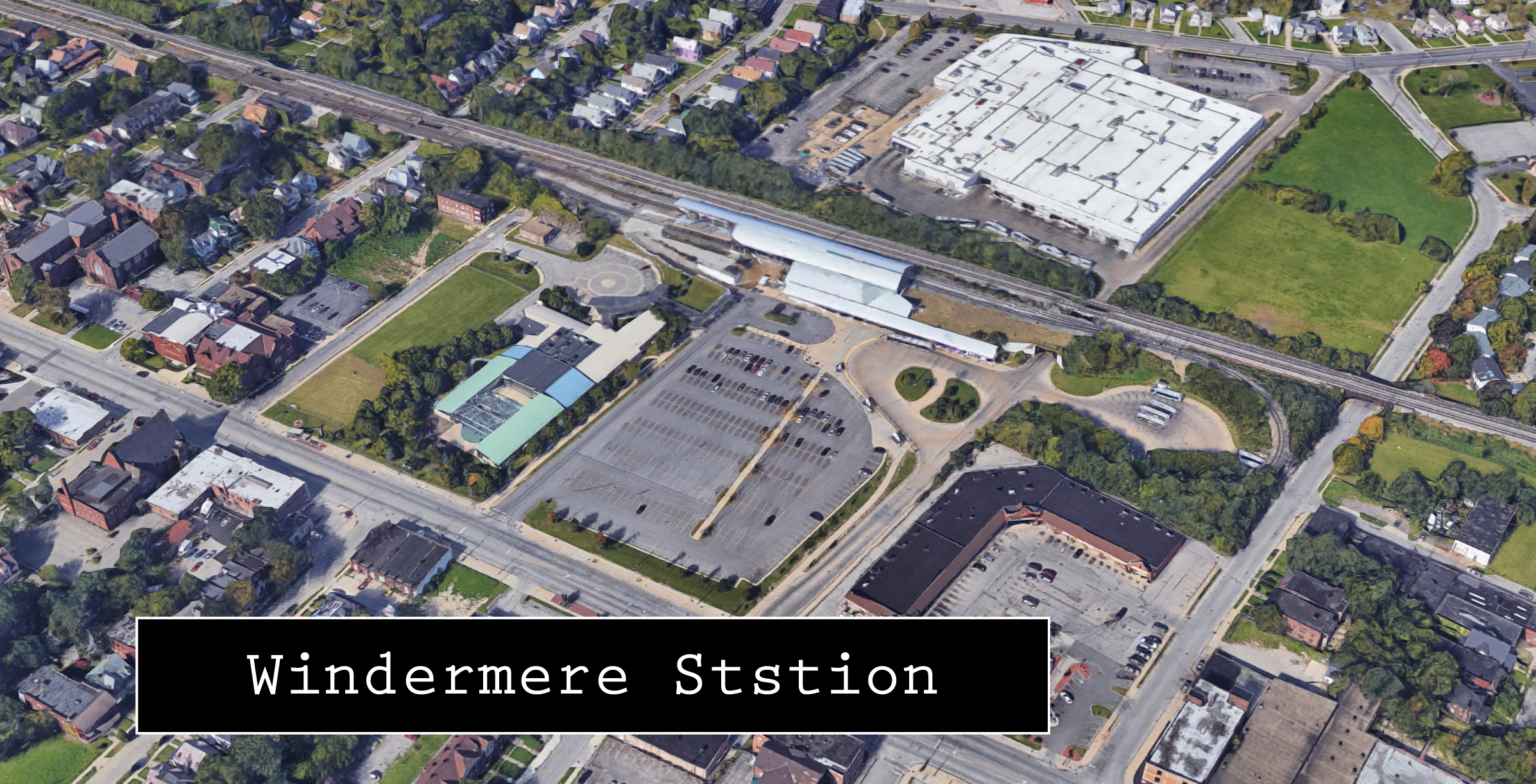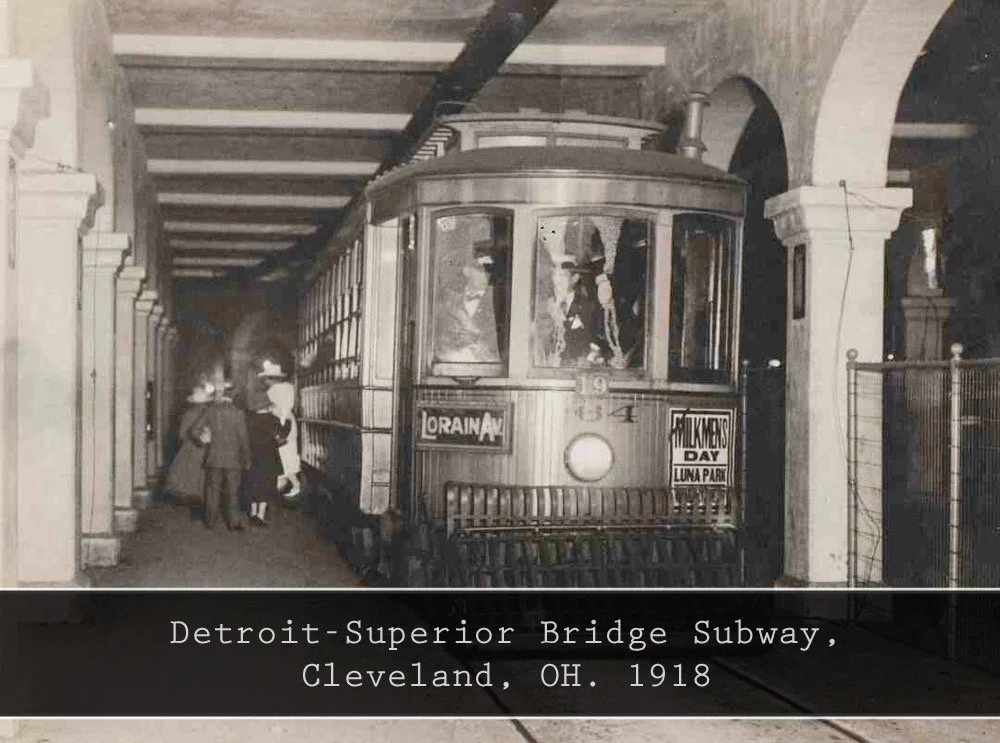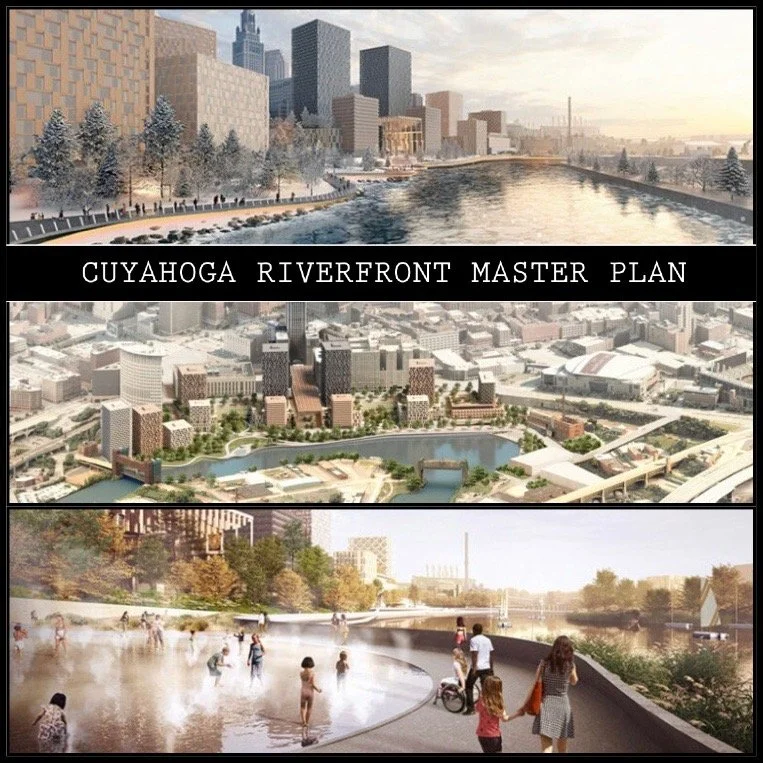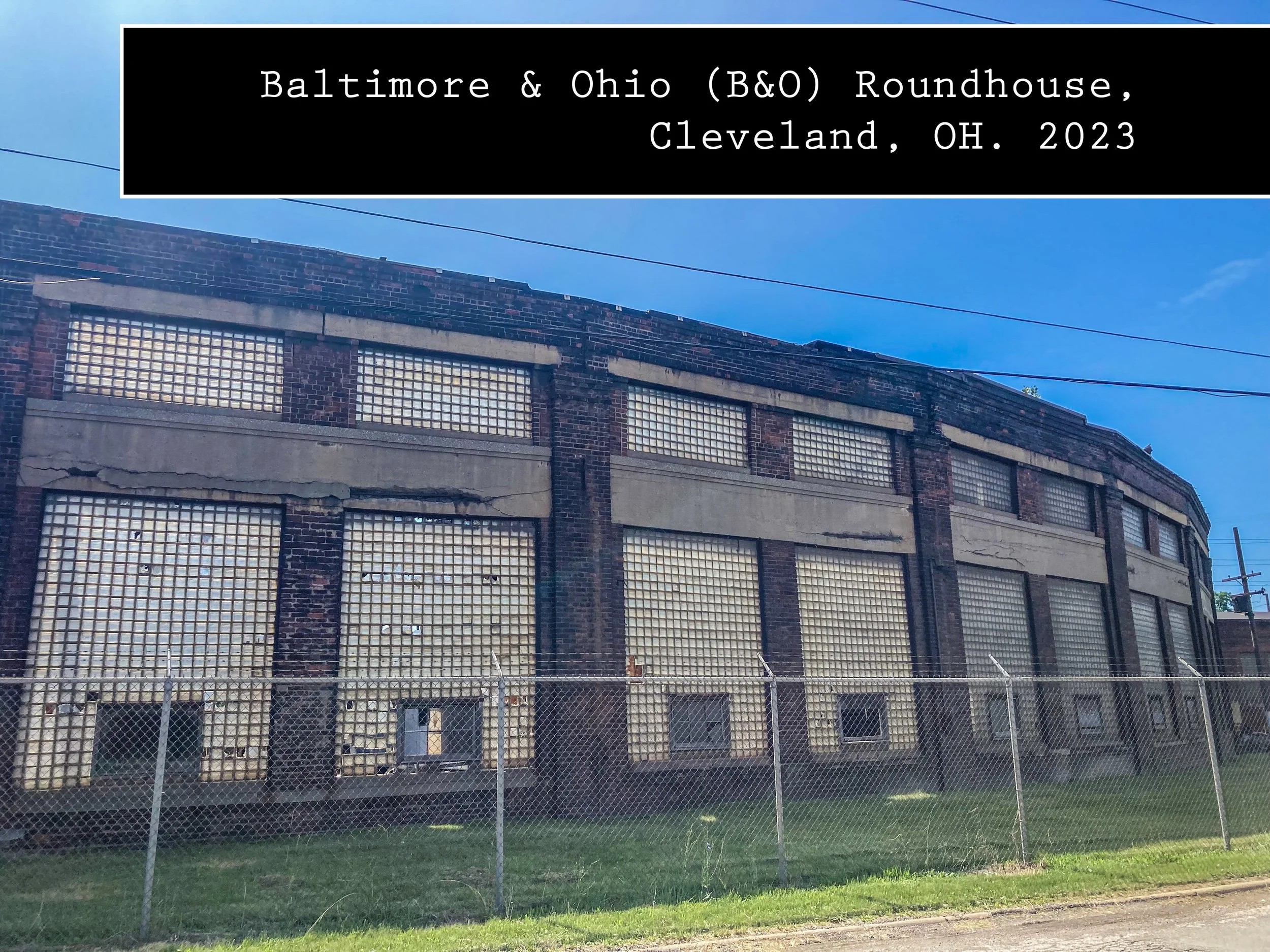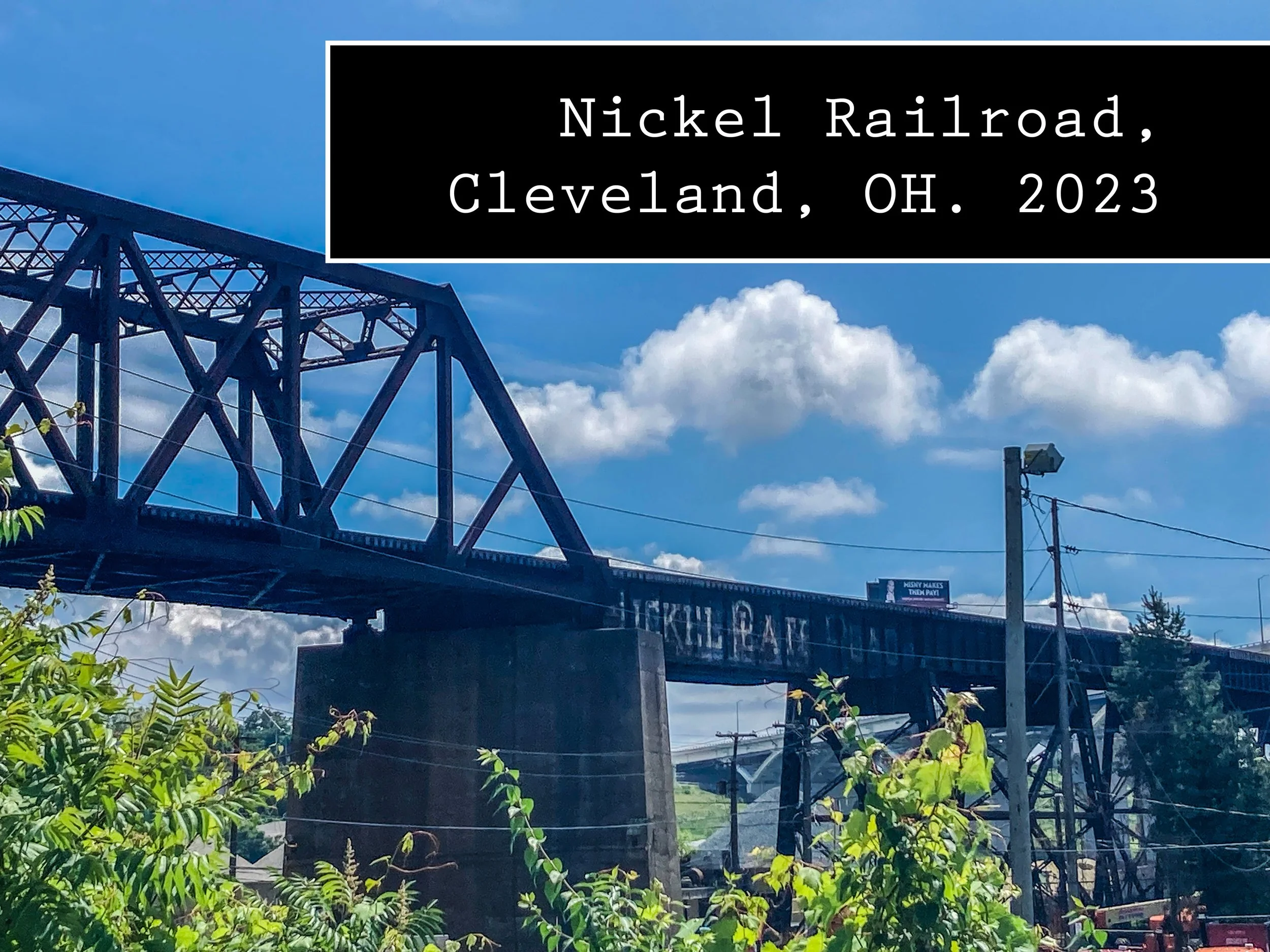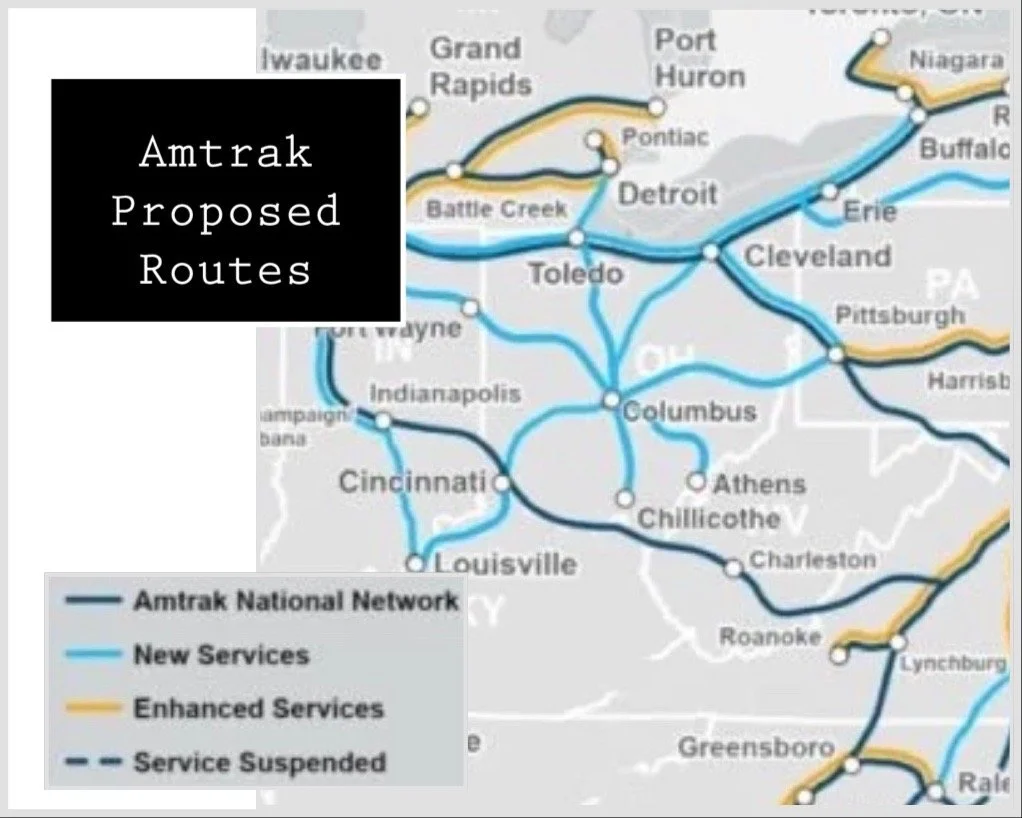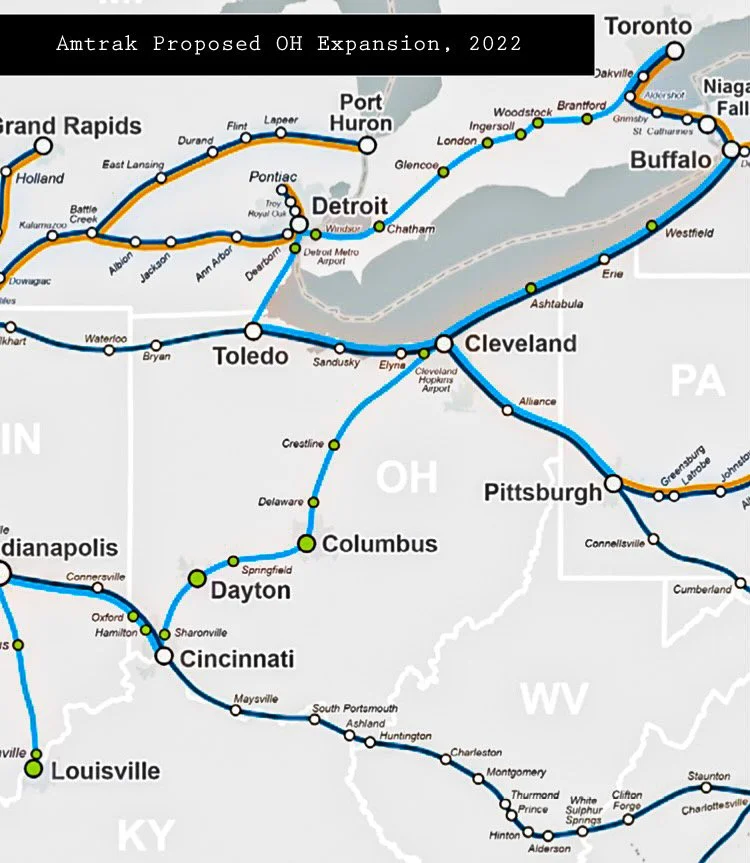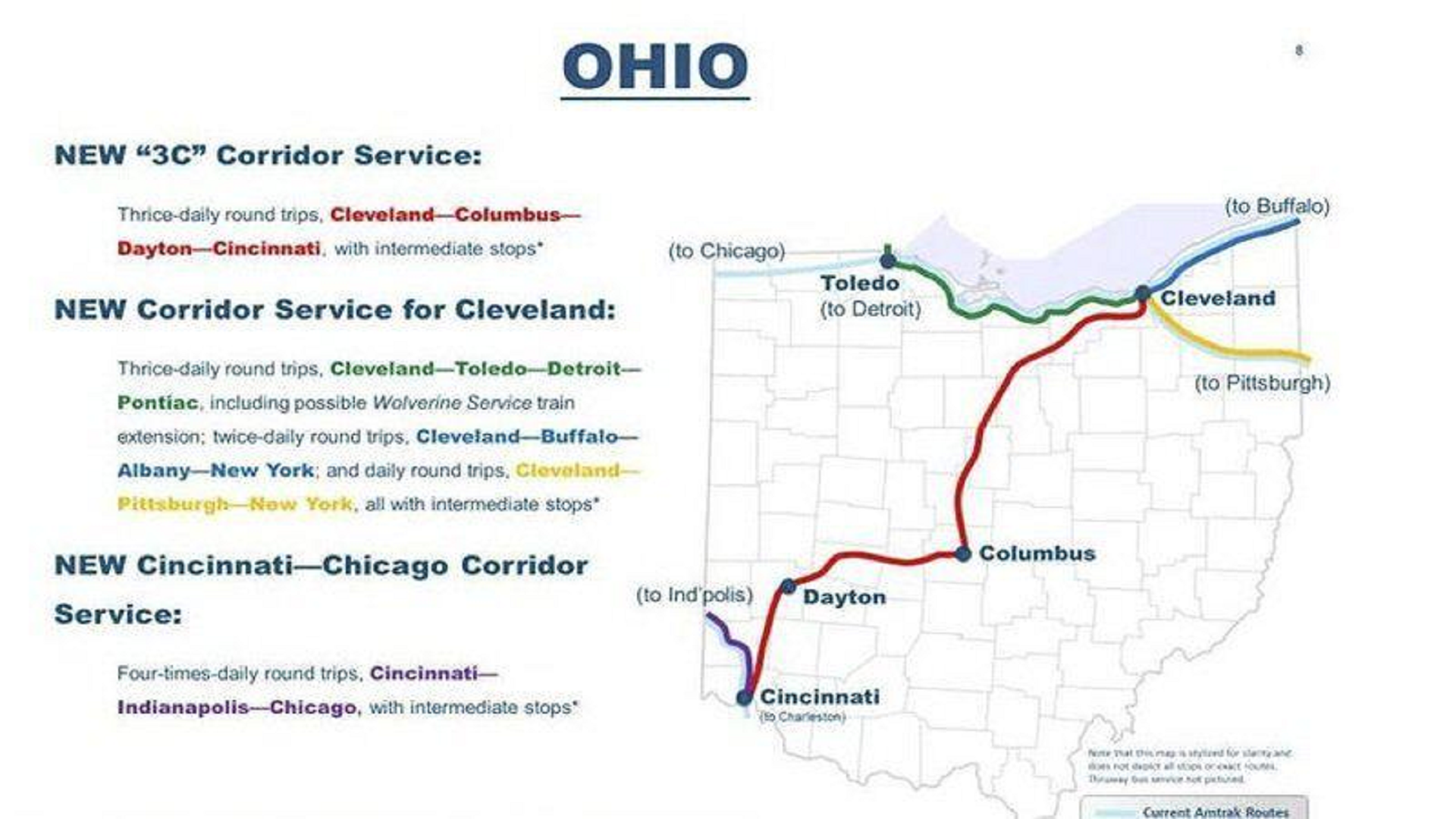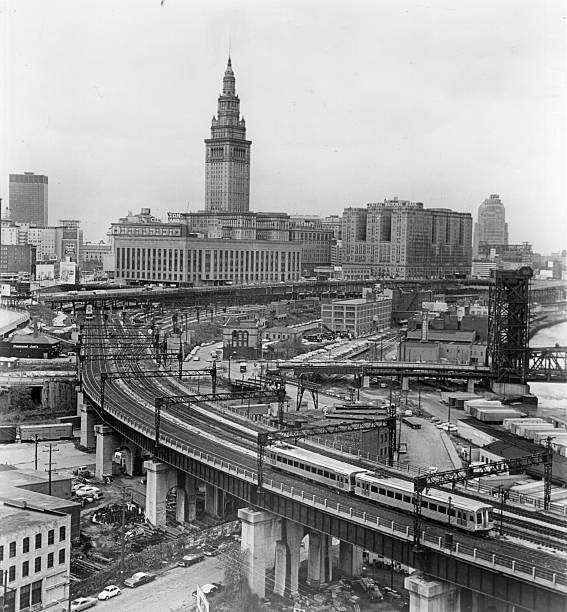Ohio Train Urbanism:
A Policy of Progression & Regression
Region Electric Interurban Map, 1908
The state of Ohio has been at the forefront of transportation in one mode or another for much of its history. Dating back to the Native American trails onto wagon roads early in statehood. The railroad system from the 19th to 20th centuries would soon follow, which turned partly into Ohio’s extensive bicycle and state highway systems later on in the latter century. Heck, even the Wright Brothers owned a bicycle shop in Dayton, Ohio. Well before their first flight. Don’t get me wrong bikes are groovy and I’m a big fan of hikes myself, but that’s not the subject for today. No. I’m going general today; as I explain Ohio’s state passenger rail in personal and historical context.
I. Excursion
Beginning with my personal experiences; I will start granular with a specific train excursion I took to Cleveland a few months back. I had this one planned for a few weeks prior; as I was attending Rediscover Veterans Memorial Bridge. This event features self-guided tours of the long-since closed lower rail deck on the Detroit-Superior Bridge; which began use in 1918. Furthermore, talks and discussion led by fellow urbanist and Cleveland city leaders also take place. It was the first event of its kind that I’ve been to personally, so I was doubly excited to walk and talk with likeminded folks for the span of the bridge. Of course, I had researched some other rail sightsees, but I’d say 75% of the trip was just me stumbling upon or googling things. Very much my way of figuring where to go and what to do. It’s not the best or safest sometimes, but I’m on a mission to see some great historical artifacts of rail’s golden age in Cleveland. So let us begin.
So, the morning of the event I park-n-rode near Hopkins International Int’ Airport and embarked on the Red Line. As Cleveland’s only ‘rapid transit service’; the western route spans SW from Downtown to Hopkins and has 15-20 minute frequencies on average. I guess by rapid they meant that you’re going to be 'rapidly' wishing for better service. I know, I know, it’s Cleveland. I’m from Akron, so my hopes weren’t high beforehand; and hey. It’s passenger rail service from the airport to downtown. Las Vegas doesn’t even have that (somehow). However, despite Cleveland’s grand rail history recording equally grand passenger and freight numbers. Land use around every station spanning where I got on at Brookpark till when I got off at West 25th in Ohio City ranged from Park-n-ride to abandoned industrial crater. Upon researching the land uses of the stations on the east side of the line out to Windermere Station; I found pretty much the same thing. At the East 79th St. Station, I found an abandoned industrial scape with foreboding, complete with empty concrete slabs of a former industrial district. I think the stop serves the neighborhoods of Garden Valley and Fairfax with absolutely nothing adjacent to the station. I hope plans for some sort of station adjacent land use are in the works A few on the west side, like the West 65th or West 150th stations, were just tucked into the corners of small neighborhoods of single family houses.
Most of them, however, were park-n-rides. Don’t get me wrong park-n-rides have their uses. Particularly, if you want to easily connect commuter rail services with far flung suburbs. There’s nothing wrong with walkable suburbs, as long as the park-n-ride is centralized and walkable to and from the station. This will allow for dense urban development to form around the station. Back in the day, Ohio’s interurban rail systems did this perfectly. Supplying many areas with centralized public mobility with reliable service and, at the very least. Connections East-West or North-South, while often times both are offered. Today, countries like Japan and The Netherlands implement this way of park-n-ride development. Putting less meaning in the word ‘park’ by restricting outright car-oriented development around the station. This is done in a way of building and zoning that connects the station in both a walkable and convenient way. Furthermore, with more meaning on the amenities, services, and routes you get when you ‘ride’. Like in The Netherlands or Norway; bike transport can greatly help implement this, as well as compliment and promote passenger rail transit.
Red Line Stations
I may get into each station on the Cleveland Red Line in a later article or on the podcast, but suffice to say I took note of the numerous ways to butcher station adjacent land use. I believe it’s an important asset on the path to Cleveland’s sustainability. Yes, despite its association with economic despair in recent history, Cleveland has great potential in its rail transportation. Whether it is Cleveland’s lengthy rail history or the bones of a once-great passenger rail system and those whom encompassed it. As I headed down Cleveland’s only heavy rail route; ever so closer to Ohio City and the main event for my Saturday.
After arriving at the Ohio City Station, just West of downtown. I walked around West Side Market for a second before heading towards Veteran’s Memorial Bridge. Where the bridge’s western end station one stood. A path running down to the lower level of the bridge now runs. A lower level that once ran passenger rail service connecting downtown with Ohio City and beyond for now lays abandoned. Only open during days like these when discussion and ideas are open as well. Once I was on the lower deck of the more than 100 year old bridge. I checked out the west end first; following a double tracked line still embedded in the floor. Really becoming clear as the rail fanned out towards the passenger approach. Slowly the bridge’s western terminus drew closer. The Detroit-Superior subway ran service on the bridge from its opening in 1918 till 1954. Underground stations bookended the bridge; as the west end’s West 25th St. Station held four platforms and the east end’s West 9th Station held two. Remarkably, ticket windows still exist on both ends, along with trolley and subway cars sprinkled throughout, all in which have received refurbishment since closure.
Following the south intact tracking to the East end of the bridge led me out downtown near the Settlers Landing Station on the currently-suspended Waterfront Line. Mind you, this is the only RTA line that connects with Amtrak, but since Amtrak’s arrival times are ungodly early. It doesn’t really matter. However, the Waterfront Line just recently started reopening service for Cleveland Browns home games. Hopefully a full reopening of service will take place next year. Anyway, I checked out the suspended, and overall nicely spaced Settler’s Landing Station and headed southeast. After about 15 minutes of walking I come upon the former Valley Railway Station. A beautiful structure hidden behind the ledges stepping up to the overshadowing Terminal Tower, South of downtown. I will save this tower talk for later. For now, I continue to walk east spotting a large expanse of parking lot on the riverfront peeking into view. Various types of bridges come into horizon’s view as I move towards the riverfront. Slowly, I come down a slight grade noticing even more empty parking lot; truly disoriented by the shear hollowness of the urban form, or lack there of. Whilst, every now and then looking over my shoulder to make sure I wasn’t about to get my world rocked. However, comic relief ensued as drunk kayakers were hootin’ and hollerin’ just over on the river. Twas a place so close to the downtown that housed this emptiness. About 400 feet away from the southwestern side of Progressive Field; surrounded by underutilized land that had the making for many possibilities. This was an almost sustained thought while walking through it. Apparently, I wasn’t the only one who thought so. About a month after that day, I stumbled across news of that particular property being purchased.
II. Property Proposal
In his quest to buy all of Cleveland, Ohio. The Dan Gilbert-owned real-estate company, Bedrock, has big plans for this underused riverfront land. The 3.5 billion dollar, 35-acre redevelopment of the riverfront near Collision Bend will feature; 2,000 new residential units, 850,000 square feet of office space, and 12-acres of public parks. A series of plazas and terraces would slowly step down to the river, with smaller park areas embedding themselves between each step of the river’s descending approach. Last month, Bedrock and the City of Cleveland announced this master plan with a timescale of “15-20 years”, according to Gilbert.
Totally speculated, but… Plans could take inspiration from regional sources. For example, a Milwaukee-style residential use combined with a promenade-style similar to Pittsburgh, or even Wheeling would be a great way to connect the riverfront. In turn, becoming a riverfront development that is connected to the city economically by being somewhere people want to be. Furthermore, if there is going to be a sustainable redevelopment plan. A walkable, safe connection with downtown to the north, is necessary. Rail could be implemented easily via CSX-owned track recommissioning for future regional passenger use; including a possible route terminating in Cleveland’s downtown at Terminal Tower Station. A Station just waiting to come back to life.
Anywho, Dan Gilbert’s recent purchase of this vast expanse of nothingness was the starting point on my trek to find Cleveland’s old Baltimore & Ohio Roundhouse. The backdrop of which is absolutely unproductive, uncomfortable, and an unsightly piece of underutilized land disconnected from downtown Cleveland. Along my walk across; I found this property currently boasts a (personal favorite) sign that just simply says ‘No Road’. Warning adventure seekers at the entrance of a long-since closed bridge way blocked off my rusted bars; however still walkable. Nonetheless, ominous signage aside, Cleveland has potential assets that can reconnect the riverfront. Gilbert’s successes in Detroit can be a good opportunity for him and his team to learn from other cities of the region; in both historical and economic contexts.
III. Excursion (pt. 2)
The history and the economy always intertwined. Nothing is any different for my stroll through the urban decay just south of Cleveland. Sometimes it’s sad and sometimes it’s art. However, continuing south over the river and drawing closer to the sizable rail yards that skirt the city. Soon, flanking Tremont, I finally arrive at the old Baltimore & Ohio Roundhouse; finding some Pennsy carriages and Cleveland Subway cars in the process. Truly a sight to behold, along with the half-standing roundhouse structure housing a blurred time in Cleveland passenger rail. Continuing my walk north into Tremont; I followed the river out to the 490 interchange and back in while taking in various views of the city I’ve never had before; as well as a lost section of the Nickel Plate Railroad on my way around. Soon, I was back near Ohio City on the west side and after essentially doing a lap and half around Cleveland. I head straight into downtown for Terminal Tower Station to catch the Red Line back towards the airport.
As when talking about suburban park-n-rides earlier; when allowing for ease of access in both the centralization and frequency of local and regional passenger rail routes. Not only will the connectivity of the redeveloped land improve. The ease of mobility will inspire traveling with curiosity. The curiosity, for which, is slowly drained by the short-sighted pull of an unnoticeably ever-changing sameness. The curiosity, which for Cleveland, has always been the city’s location. The location that allowed Cleveland to prosper with a centralized and robust transportation network encompassing various modes of travel. The prosperity which was incredible enough to warrant such a monument as Terminal Tower. The historic monument built to provide central public services should be thought of with preservation and realization in mind. Preservation in understanding the history, whilest realizing sustainability can only be truly tested in the most dire of times.
At last, I arrive at Cleveland’s Terminal Tower. A vibe not too different from Cincinatti’s Union Station. A certain hallowing familiarity is the feeling I’m greeted with. A large once-Union terminal was served by numerous powerhouses including; NY Central, Nickel Plate Road, Big Four, Erie, and Baltimore & Ohio Railroads with local stops also served by Shaker Rapid Transit. Today, Tower Station is only served by Cleveland’s RTA with regional services being relegated around downtown to overnight arrivals at an Amtrak shack (AmShack) north, closer to the lake, and farther away from the downtown center. Even so, this set up could be a possible opportunity to slowly bring better passenger rail connectivity to the city. I believe a well implemented redevelopment of the poorly used riverfront can be a catalyst for increasing the ‘want’ to be in Downtown Cleveland. A better connected transportation system in a city like Cleveland can be a big boost in the walkability of a developing area within the city ie. the riverfront. The important side effects of an efficient, mixed use, urban development lay in the great walkability and vibrant economy of an area. Zoning policies that allow for mixed use development in more locations can allow for the bringing back of public places people can feel peace of mind in and actually be apart of. The shear stress of a society where you are constantly a customer takes monetary value to places it should reconsider.
IV. Implementation of Redevelopment
As for Cleveland’s riverfront redevelopment, the property in question is flanked to its north by the Terminal Tower across W. Huron Road. This wide city street crosses over into the large area of parking lot that steps down onto the riverbank; currently peppered with rusted industry.
Even before the unreasonably sized parking lot; the area wasn’t utilized in the best way development-wise. At that time, rail dominated this stretch of riverfront land. Stretches of the Shaker Heights interurban and Valley Railway; as well as numerous freight railroads historically ran over this property before most of the rail was torn up for today’s swath of parking space. Furthermore, at that time, freight lines made sense at the time as water and rail transportation were very much linked for both freight and even passenger services on account of shipping and receiving convenience. Cleveland’s waterfront and riverfront were being extensively used for local industry. In time, the fragility of industry excess began to show and decline emerged.
Now, we have a master plan with a $3.5 billion price tag. To be honest, I have little clue what drove them to that timescale or project price. Furthermore, while Mr. Gilbert has been involved with Cleveland real-estate development for years now. The idea of a large, private real-estate company redeveloping a rather equally large swath of city land doesn’t paint the best picture. Additionally, 15-20 years is a lengthy timescale, in my opinion. As I feel a lot will change in that time in just the economic factors alone. In a redevelopment plan like this; there are so many variables involved through the process. Right now downtown Cleveland needs connectivity to the south. Even more important, the development of the riverfront has to have intent and personality behind it. Not a gentrified personality, but a character that brings strangers together and builds the communication of the area. I love public squares of any size and I believe they should be accessible, central, and productive places.
Now, I’m not a big fan of devoting thousands of square footage to office space considering current office occupancy rates are decreasing across the US Specifically, in Cleveland; office vacancies have increased 3.9% from the first quarter of 2022 to 2023, according to real-estate firms Newmark and Jones Lang LaSalle. Cleveland recorded an overall office vacancy rate of 21.4% at the beginning 2023, and with the rental costs increasing per square foot. It’s time to devote more of this project towards the building of mixed use, mid-rise, walkable living spaces.
Honestly, Mr. Gilbert should focus on providing Cleveland with a development for sustainable growth. A platform for smaller restaurants, shops, health providers, and small corner stores to thrive in their own walkable local ecosystem. This will promote people with an environment that they can actually use. Not just a piece of sameness they can promote on a box. Something that not only connects to the city, but also stimulates more connectivity for the future development of efficient neighborhoods.
To my surprise, an early plan to extend the Cuyahoga Valley Scenic Railroad from its current northern terminus; all the way to downtown Cleveland’s Terminal Tower Station. From there, you could take the RTA’s Red Line to the airport and fly out. This theoretically means you could (if you timed it out very very well) take a train from Cleveland Hopkins Airport to downtown Akron. If Canton ever starts thinking again maybe the scenic railroad extension to Canton could reopen. Creating a Cleveland-Canton route that hasn’t seen decent frequency passenger service in decades. Although, it would most certainly be the most convoluted route ever, but I can dream for novelties sake. Amtrak’s 3-C’s Line can’t come soon enough for a state with a capital city, Columbus; which hasn’t seen a passenger train since 1979.
In that spirit, as promised I will expand finally to the state of state passenger rail in Ohio. Its history, its present state, and its future. I hope you are enjoying the article.
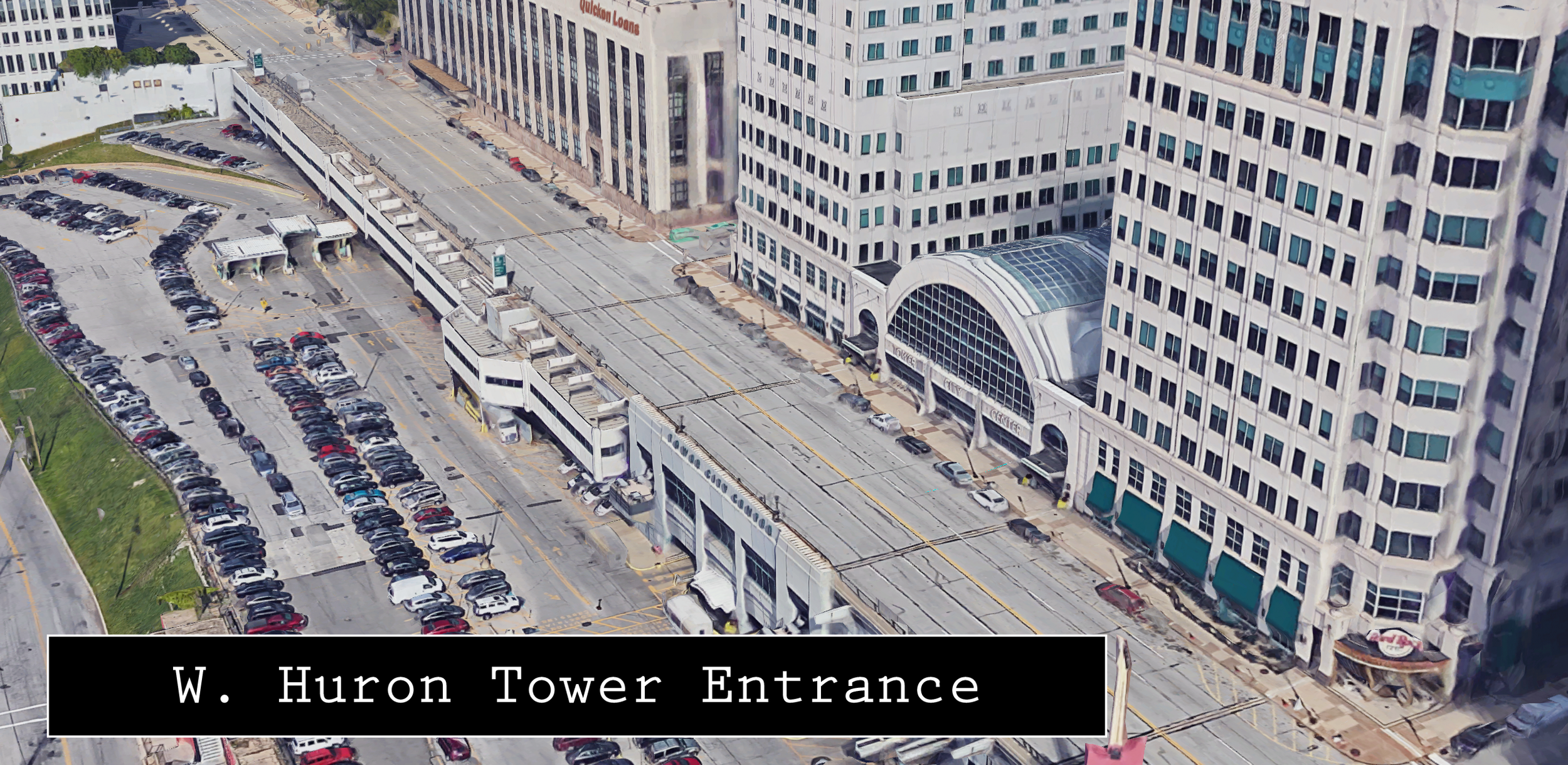
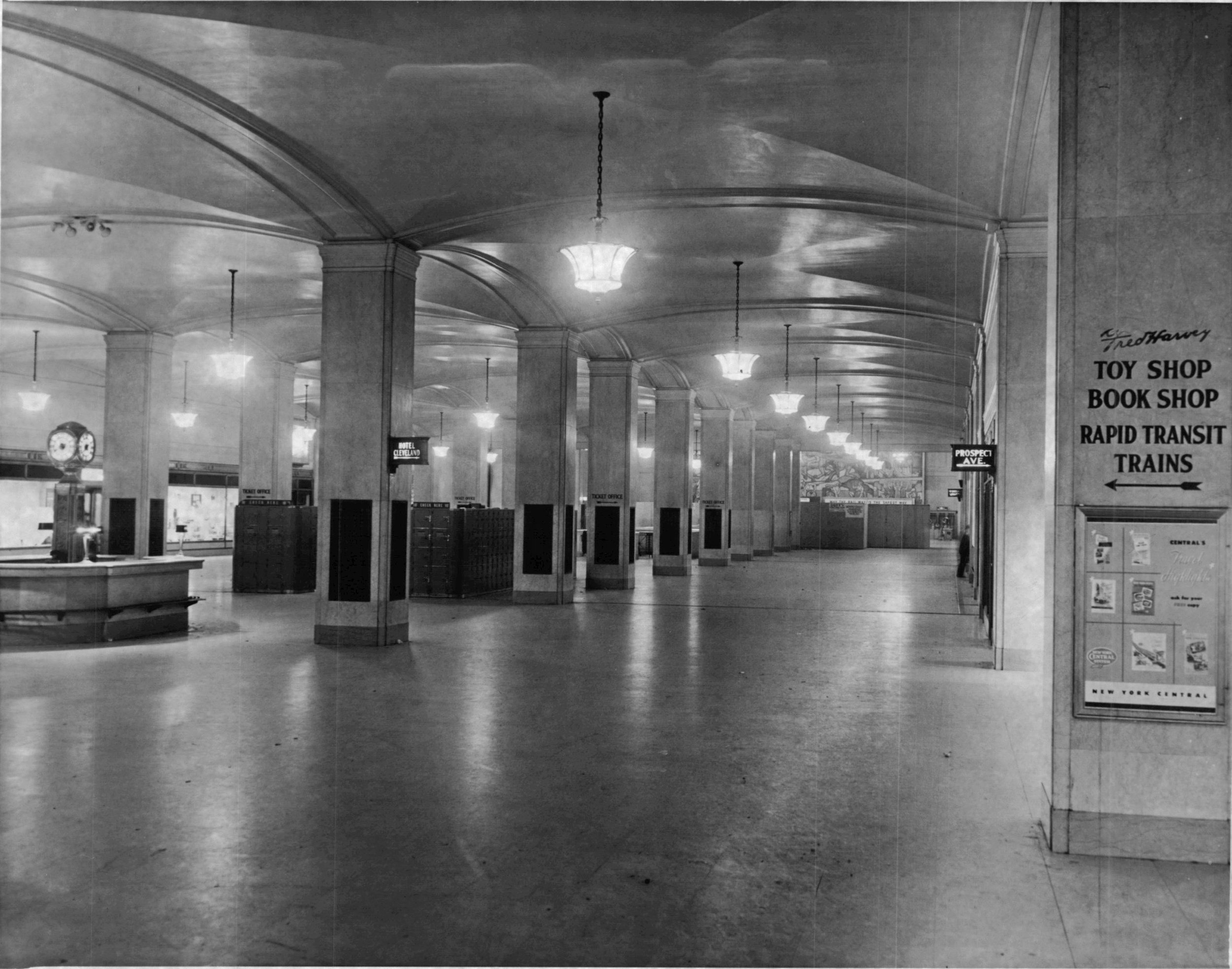
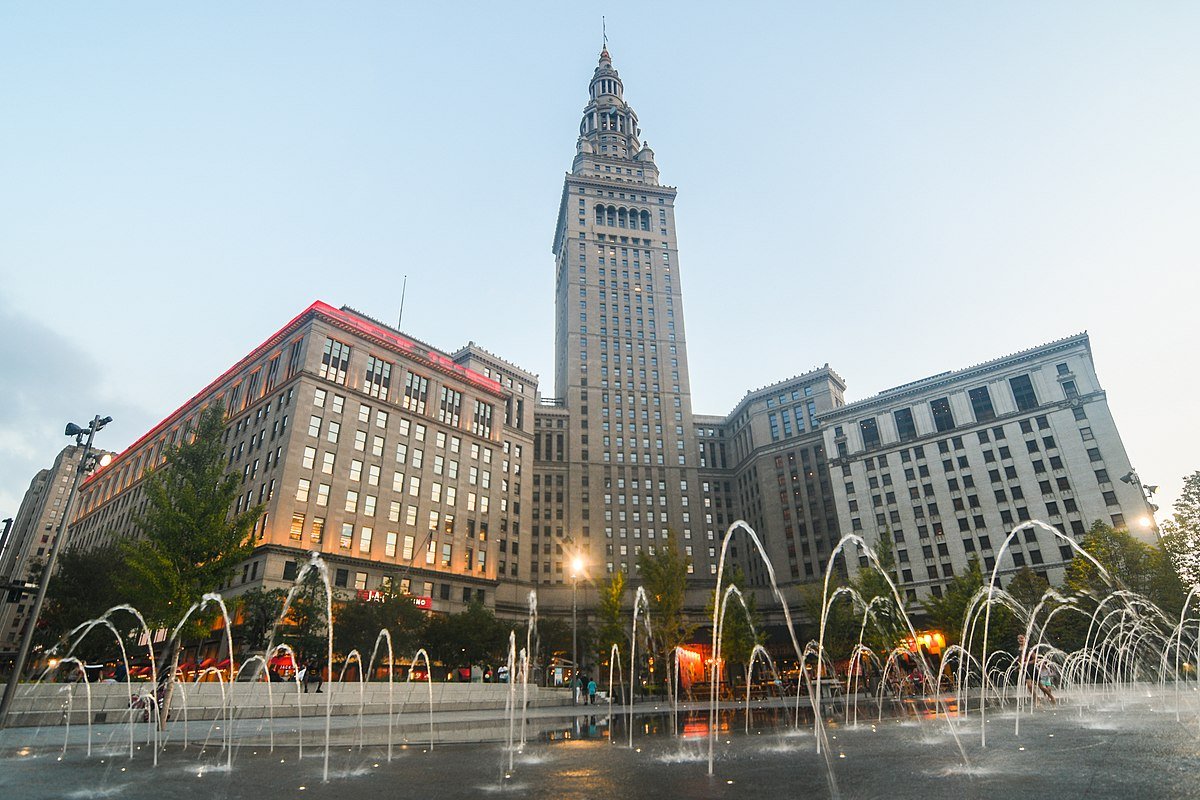
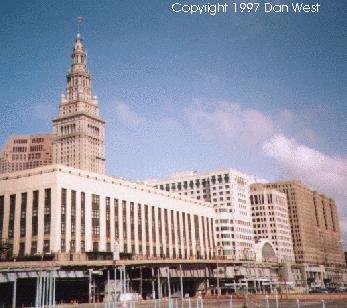
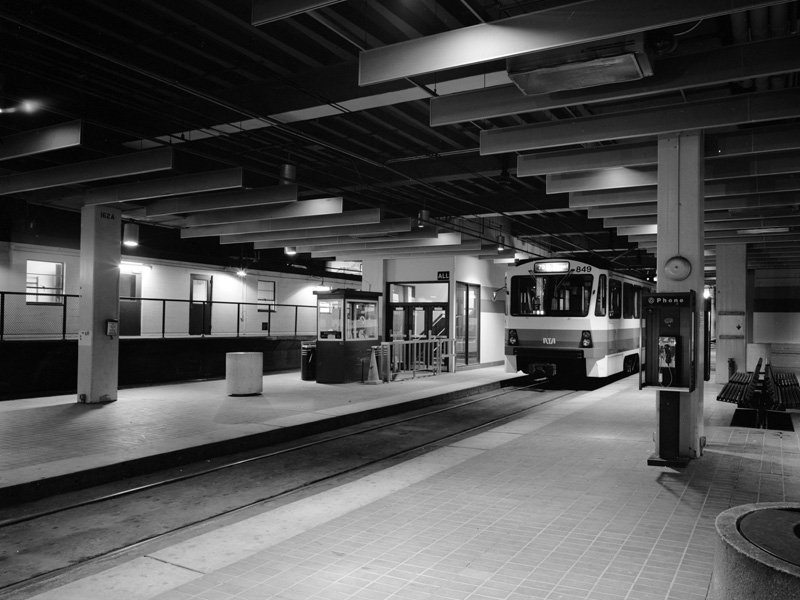
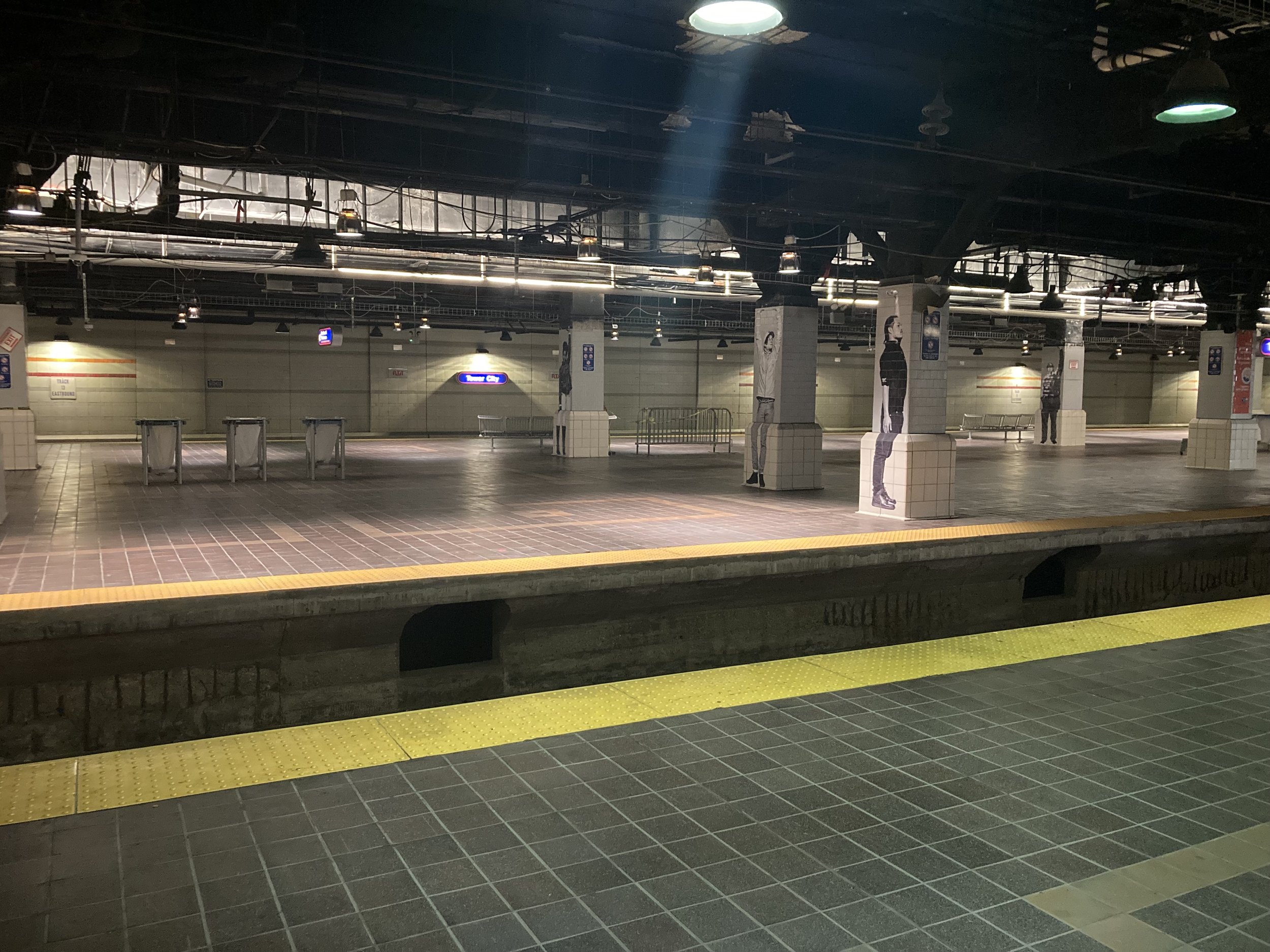
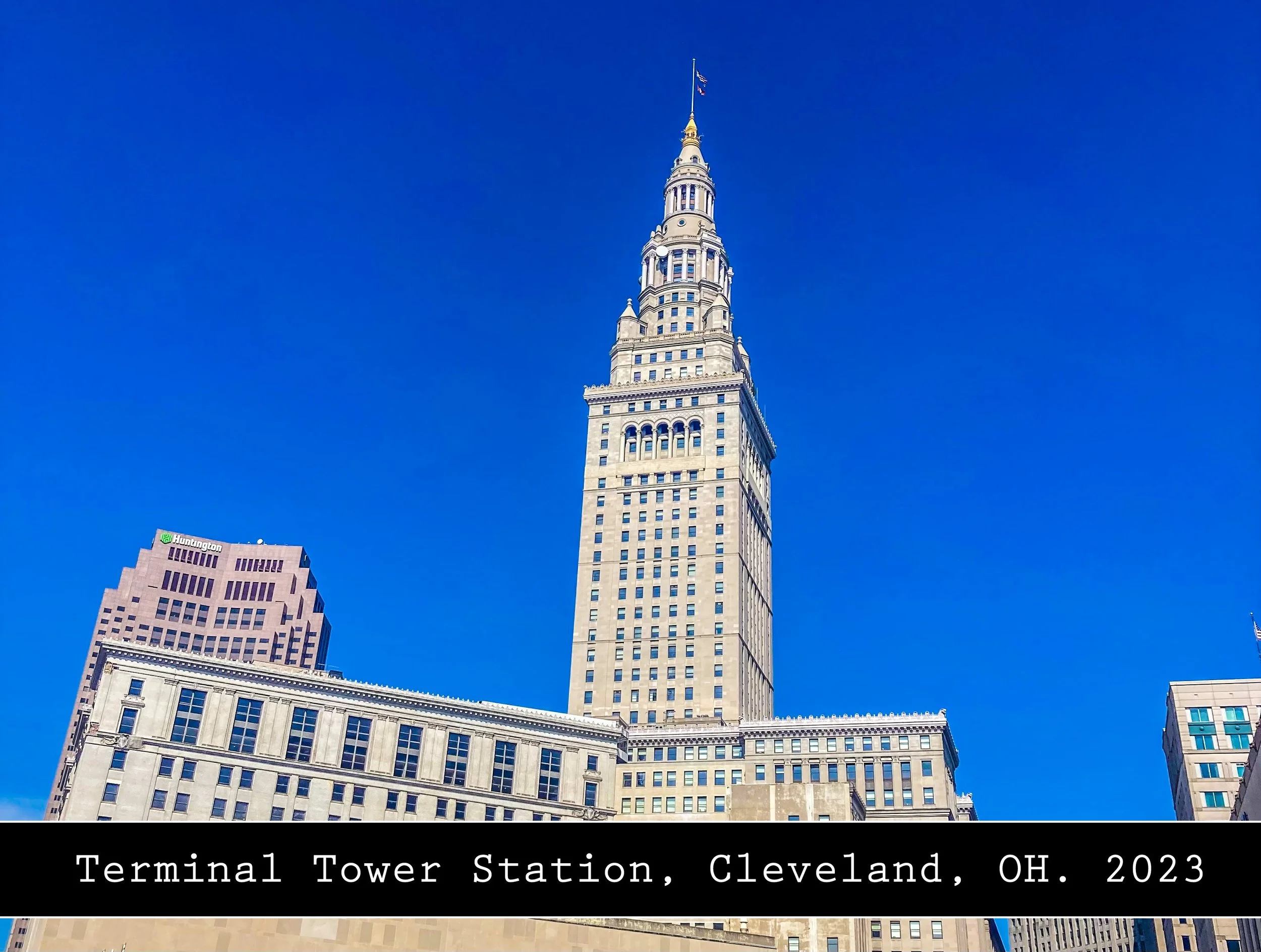
V. Amtrak Proposals
During the later 20th century, passenger rail in the Midwest took up consolidating and later scrapping routes to save a buck. Falling the hardest; with the help of bus routes taking the rail route mantle. Ohio is a particularly good state if you are a fan of rail station architecture and locomotives. Even now, the state boasts a great amount of active track miles. However, an overwhelming amount of Ohio state tracking is owned by the Class I freight lines. Despite this, I have good hope that it will return. Unfortunately, I believe it will first come in the form of Amtrak, which would mean no local service and less frequencies as Amtrak runs longer distance national routes. Of course, however, this would be a big boost for the accessibility to rail mobility in the region. About $66 billion in federal funding was allocated to the expansion of Amtrak’s network nationally and seeing how Ohio north-to-south was a dead zone for a passenger rail line; plans for a 3C+D route were thought up.
A 2023 Amtrak Possible Rail Routes Map features Columbus as a hub for the region. Regional “spoke” lines emanating from Columbus are proposed to reach Cleveland in the North; Pittsburgh in the East; Athens and Chillecothe, OH in the SE; Cincinnati in the SW; Dayton in the West; and both Toledo, OH and Fort Wayne, IN in the NW. Furthermore, a proposed, much needed Cincinatti-Louisville-Nashville Route would connect the region where it hasn’t in decades. For Ohio, it’s been decades of switching the state’s mass transit from rail to bus. Consequently; cutting frequencies, cutting lines, and even cutting entire trunk lines, as rail consolidated first through competition, but then through bankruptcies. All the while the region's economy suffered through its own decline; as industry came with both great expanse and at great expense.
VI. Passenger Rail History in Ohio
Ohio’s passenger rail was truly a vast network indeed; as no other state even approached its total 2,798 miles of track. The generally flat typography of West and Central Ohio allowed for relatively close towns. As railroads consolidated in the late 19th century; larger railroad systems running through multiple population centers started forming. The first modern interurban in Ohio, as the Newark & Granville Street Railway opened on December 28, 1889 . Furthermore, Ohio’s history in railcar manufacturing is also notable bring home to Niles Car & Manufacturing, Jewett Car Company, Barney & Smith, and GC Kuhlman.
Ohio’s largest interurban was originally formed in 1907 as the Ohio Electric Railway. This massive 617 mile system was created with the the consolidation of 14 smaller interurban railways. Interurban is an understate as the system served almost the entire state, with the only region left out containing Athens, OH, Marietta, OH, and Parkersburg, WV. Fortunately, there was still other interurbans that served that region. The system served all the large centers of industry for the time, as well as smaller agriculture based communities. Major lines included; Dayton-Columbus-Zanesville, Lima-Toledo, Cleveland-Akron-Youngstown, and Dayton-Hamilton-Cincinnatti.
This well connected of a network brought economic growth to the state of Ohio beginning as the 20th century dawned. At this time before WWI; progressive ideas thrived as early movements for unions, suffrage, the environment, and transportation were inspired or enhanced within the modernizing state. Through the first two decades of the 20th century, almost all Ohio towns and villages with a population of more than 5,000 were connected by electric interurban railways (only Coshocton was left out).
VII. Decline of Passenger Rail in Ohio
Unfortunately, in a way, Ohio was ahead of its time in electric rail service. In the early 1900s electric was only really deemed worth the hassle on an interurban if large elevation changes take place. Not being financially stable and a culture of public service owned by private companies caused the state’s interurbans to consolidate only to then go bankrupt, or split back up to smaller lines.
The Ohio Railway was no different; consequently paying no dividends during the lines existence and lost a further $1.5 million as a result of the 1913 Great Dayton Flood. In 1921, the line was bankrupted and chopped. Several smaller railroads created from the split combined once again in 1930 to form the Cincinatti and Lake Erie Railroad. By then, most interurban lines in Ohio had ceased operation. The Lake Shore Electric has the distinction of being the final interurban to run in Ohio. The route ran from Cleveland to Toledo; as tracks ran on both private rights-of-way and with local streetcar systems on city streets. Alas, the final train ran its course in 1938 routing from Park Square to Toledo. From this point on it would be only the largest of rail lines serving Ohio’s stations.
Really with the onset of the Great Depression, the clock for Ohio State Passenger Rail started ticking. If a rail line couldn’t be financially solvent during the indulgence of the 1920s; it sure as hell can’t be after a stock market crash. The short-lived increase for passenger rail during WWII couldn’t hold off the inevitable accessibility, affordability, and preference to the car as a tool for living. I’m sure for someone who only ever took mass transit and coming out of war time a change to an independent vehicle was a welcoming thought. In the 50s, the accessibility of an automobile had reached a point of popularity. The generation prior, those of which who had cast the invention out of cities, would have found this remarkable shift for the machine, unbelievable.
As the interstate highways divided and destroyed urban centers across Ohio. Entire blocks, neighborhoods, and communities would be forced to uproot and leave. All the while urban freeways plunged their way through mostly communities of color under the racist guise of “getting rid of urban blight.” The harrowing stories from Cincinnati’s West End comes to mind on the effects that this “development” had and still has on an urban setting. In short, this exaggerated the exodus of many Ohio cities for the surrounding, sprawling suburbs. There’s so many variables outside of Ohio’s transportation changes that propagated the fall of what is now known as the “rust belt.” However, the shift to a prodominently car-oriented suburban society normalized and manufactured a culture; in which owning a car was mandatory and marketed hard towards consumers.
By 1980, mass transit for the state of Ohio were an afterthought; as a year prior both Columbus and Dayton saw their passenger rail services terminated. In the soulless deregulation under the shiny veneer of profit that is the 1980s; the Reagan Administration paid no mind to public infrastructure of any sort. Reagan-era policies certainly didn’t cause the economic downturn in the midwest. However, his preference to keeping up a “good image” over providing the public sector with a positive base for economic growth choked out any sort of cohesive city and town development. A constant underfunding of passenger services and deregulation of freight services further propagated a false idea that “trains are history” and “cars are the future.” The normalization of sprawling disconnect and hallowed out cities. The thing about regulation and transportation is, for better or worse, it is all connected. A positive or negative feedback loop can be created with just the right implementation or lack there of. In the late 1980s, nothing signified this more than the abandoning of once-busy lines in both freight and passenger. Segments of Erie Railroad’s Chicago main line, Pennsylvania Railroad’s Panhandle Route (Pittsburgh-Cincinnatti-Chicago-St. Louis), and Baltimore & Ohio’s entire Ohio division were abandoned as important industry left the region and cost-cutting measures needed to be enacted.
With the final decade of the 20th century in view, the federal government was in no mood to help as regulations rolled back during the Reagan Administration stayed in place through the Bush and Clinton terms. Iconic Ohio railways were torn up after more than a century of passenger and freight service. Loss of industry rail infrastructure further exacerbated the use of freighters on roadways and outright denied Ohio of a blueprint for a state passenger rail system. By the 90’s, all of the major eastern Ohio trunk lines and its components had been pulled up. However, up in and around Cleveland,in particular. You can still find abandoned segments of the former Baltimore & Ohio, Chesapeake & Ohio, and Nickel Plate Railroads.
According to the 'Routledge Historical Atlas of the American Railroads’, between 1965 and 1995 Ohio railroad milage decreased from 8,131 to 5,123. As the entire US rail industry was consolidated down to single digits tracking was abandoned. In an early bid to save a lot of Ohio’s transportation history; non-profit scenic railroads were created and run by those who has once lived and worked on ‘em. By building partnerships and buying up old rail right-of-ways. Scenic, non-profit lines like the Cuyahoga Valley Scenic Railroad (CVSR) in Ohio or the Cooperstown & Charlotte Valley Railroad in New York were formed through necessity of preservation. Of course, these could never replace the utility, budget, and convenience of commercial passenger rail.
As the 2000s slowly staggered along, Amtrak rail service ceased operation in some of Ohio's larger cities including; Akron, Canton, and Youngstown. In best case scenarios smaller depots were bought by any number of businesses and organizations. Personally, I’ve seen these stations redeveloped into anything from Coffee Shops and Restaurants to Museums and City Council Offices to private homes and everything in between. Train-themed bars tend to be my favorite of these redevelopment practices. Like with the lines they served; the stations were just as much of a public utility and gathering place. Housing a variety of businesses including; public baths and showers. Unfortunately however, this seems to not have been the fate for many of Ohio’s stations. Specifically, larger industrial centers like Columbus, Akron, and Canton that once had their own sizable metro rail systems with grand union stations; now only are served by regional bus with most stops not even having a shelter.
After years of ripping up the rail lines, normalizing car travel, and making passenger rail in Ohio a laughably foreign concept something became very apparent. A dead zone of passenger rail encompassing basically the entire state of Ohio had formed with the ceasing of Amtrak services in Akron in 2005. By this time, we knew full well the impacts on urban development and climate that automobiles had and still have. So begins one of the biggest problems with recent passenger rail plans in the state of Ohio. The stupidity that is created by the bureaucracy that is the Ohio Department of Transportation.
VIII. Oh DOT
Now I know ODOT has good people working for ‘em, and this is marginally a systematic issue. However, watching their state rail development commission work is similar to watching paint dry. Created in 1994, the Ohio Rail Development Commission (ORDC) is an independent agency within the Ohio Department of Transportation (ODOT) that was given the mission to plan, promote, and (one day) implement a statewide rail network for passenger transportation, as well as administer rail-related funding programs in the state. Sounds like a great plan, right? I mean commissions are a great way to organize governing departments into specific tasks so goals are met quickly and efficiently. However, Ohio’s transportation decisions are seldomly efficient and even less sustainable.
On that note, from ORDC’s inception in 1994 till today; study after study on the feasibility of a state passenger rail system has been done to the tune of taxpayer’s dollars. Proposals came and went, routes thought of and scrapped. State population charts, current rail usage charts, train speed spreadsheets with travel times and distances done up. As well as nice, glossy renderings of what the stations and the urban development around them could be. Over and over again, local news outlets would cover these PDF documents with great hope. Speaking as if those computer renderings would just fly off the page and open tomorrow. I understand yes, a lot of the time it’s a state funding issue and Ohio is no exception. However, when looking at how other states dealt with their lack of or decreasing utilization of state passenger rail. There is absolutely no excuse for Ohio’s lack of such.
IX. Hub Plan & Politics
Enter the Ohio Hub Plan, a 2007 proposal by the state to link a “high speed” rail system 864 miles in four segments with a main hub in Cleveland and spokes radiating out south to Columbus and Cincinnati; NE along Lake Erie with stops in NE Cleveland and Ashtabula; West to Toledo; and SE routing to both Alliance and Youngstown. The 2007 proposed map also had service running from Toledo south to Columbus via Bowling Green and Findlay. In which, you could take the route to Cincinnati; passing through Dayton in the process. The idea would be to incrementally improve existing freight railroad right-of-ways with the maximum speed ultimately up to 110mph. Honestly, I don’t think this would have worked even if then governor-elect, John Kasich, slept in a caboose every night in train pajamas. Alas, this man Kasich was not. He did the unthinkable and in 2010; he turned down federal grant money to the tune of $400 million that the Obama Administration awarded to Ohio for a passenger rail project. Granted (no pun intended), the initial speeds on the system would be 39-50mph. I’m not gonna lie, that’s slow as hell for state-wide service and I’m pretty sure CVSR’s line is running higher speeds in Akron today. However, for there to be 16 years of build-up, along with millions spent in “feasability studies”, just for the new guy in state office to say “it’s not fast enough” or “no one will ride it”, and not give it anymore thought is incredibly infuriating.
Keeping on that Kasich charm, according to ‘cleveland.com’, the Ohio governor told both the President and US Transportation Secretary, Ray LaHood after the fact that he had "no intention of ever building the passenger line.” Even as outgoing-governor, Ted Strickland praised a state rail plan developing into high speed rail. Even so, Kasich trashed the plan. A plan, in which the people of Ohio were interested in and on-board for more than any other passenger rail proposal at that point. While we can’t see what Ohio would’ve done with the 400 million smackers; we can, however, in the states that got the portioned grant instead; such as New York, California, and Florida.
Let’s see; in Florida, high-speed Brightline service is slowly making its way around the state with high speed service from Miami to Orlando opening September 22nd, 2023.
In New York, while not high speed; service just opened recently connecting NYC north through upstate to Burlington, VT on Amtrak’s Ethan Allen route. Furthermore, Amtrak’s Acela corridor is not only high speed, but is also Amtrak’s most popular line being in a well connected northeast region of the US.
Finally, over in California, while progress has been slow and expensive for the construction of their high speed line; with an oncoming first phase from Anaheim to San Francisco. Brightline West has announced the building of a 218 mile route connecting LA with Los Vegas via a brand new Brightline terminal in Rancho Cucamonga, CA. Furthermore, this year has experienced the opening of a new local subway line in the LA metro and a new Redlands College Route linking with San Bernardino and Amtrak’s greater California system.
In 2010, Wisconsin joined Ohio in turning down the money creating a $1.2 billion windfall for the three aforementioned states. As for Wisconsin, well, much like Ohio. Their Department of Transportation recently released their long term passenger rail goals; in which contains plans to link service to 11 new communities. Notably, also like Ohio. Linking their state capital, Madison with Milwaukee’s decent amount of service and connections with Chicago.
Even without the lobbyism, (that I’m sure happened at the time) freight rail in the US is designed solely for profit. The deregulation that took place decades before set the stage for a profit-overdrive approach. Consequently, freight rail and passenger rail are totally at odds in just about every conceivable way. This halting of passenger rail progress simply can’t be undone without a change in policy and the action of the US federal government on current Class I railroading policies. For example, Amtrak train cars are supposed to have priority over all freight cars according to federal law, but this almost never happens. The power in government is overshadowed by the set of duopolies that is much of US railroading. Furthermore, safety is also a concern as Amtrak passenger services at many points are forced to use the railroads owned by the big Class I RR’s. The same railroad lines that are overburdened by longer trains, less thorough maintenance cycles, and an overall profit-driven approach that the unchecked and deregulated freight rail sector has become.
A June 2007 Ohio Hub feasibility study noted that moving from a 79mph system to a 110mph system increased ridership by 50%. More important, according to the study system revenue double as the barrier for higher fare-paying business travelers was broken. Again, the problem is who owns the rails. Freight railroad conglomerates would never agree to spend the billions and billions to upgrade their rail for the use of passenger services. Especially since, to them anyway, profit is the game and passenger rail is almost never profitable. Passenger rail isn’t supposed to profit-focused. Passeneger rail is a public fixture and tool for an efficient, healthy, urban environment. If you are hemorrhaging funds to the point of eliminating service to your capital city; you have an unhealthy, inefficient, and unsustainable society.
X. Realizing The Numbers
Through the twists and turns of failed policy with every proposal, plan, and study a state government can possibly make. Perhaps, even in the “golden era” of US train travel. The overarching popularity and profitability of the system came as a testament to the level of consolidation; and not the level of competition. In the search for short-term monetary gains; the US never bothered to ask where such was coming from or to which end would a cost arise.
Now we arrive at today’s situation for Ohio’s passenger rail system. Like Dan Gilbert’s plans for redevelopment on the Cuyahoga or Wisconsin’s passenger rail plans. Right now, it is all talk. Judging by the past 30 years, Ohio’s state government is absolutely fine with waiting and waiting. Sitting on their hands until the federal government gives ‘em money, which they could just decline. They will give you study after study while waiting for the federal government to do the state’s job. After which, the state will complain to the feds for more spending money to build more roads.
Speaking of which; let’s check HB23!
2023-2025 Ohio State Transportation 2yr Budget:
$13.5 Billion Fed & State Funds Overall
$360 Million Highway Safety Funding
$7.5 Billion State Highway Improvements
$200 Million Transit
Ah, yes. Funds allocated to transit projects account for 1.48% of the total budget for the next 2 years (2023-2025). I mean that’s pretty sad. The federal government offered you more money (in 2011, $400 Million), than what you’re going to spent in the next two years more than a decade on.
ODOT will present renderings and pictures and spreadsheets over and over if it means kicking the can down the road. Ultimately, getting bailed out by either the federal government or private investors. All the while profit-seeking, privatized real-estate investors will buy the land, build the property, and rent it back to people who can barely afford it. Both real estate and railroading are privatized to the point of absurdity, but there is a multiple ways to solve this and it all starts with the state transportation system. The basics of good urbanism only come when the responsibility in mobility is realized through connection.
While voting for the right people is important, transportation is a social and very public issue. Social issues need not to be treated like private enterprise. It shouldn’t take one vote or one stupid opinion by one governor to put an end to years of public works planning. It takes many voices to share ideas, thoughts, and funds. To make any public project or system function. It cannot be one person’s idea, but an idea put forth and molded by many to come to (at least) a consensus. Otherwise, nothing will ever get done through public works, and the cycle of privatization will continue. Asking and advocating for your federal and state governments to be sensible in their understanding towards the rights of themselves and allowing regulation to hold them to a higher standard. That’s an important, unspoken tool we have as citizens. Sure it will not be as profitable monetarily, but it will be sustainable.
Listening and understanding every view of a project, right, or amendment while implementing your advocation breeds discussion and communication. Finally, if we get over our assumptions of others through discussion; we may see more commonality than contempt. A commonality that’s supported by the public and its work.
XI. Opportunity
Today, for Ohio’s state passenger rail plans the time is NOW! The recent infrastructure bill passed by congress allocated $36 billion for state-federal partnership for intercity passenger rail projects. We cannot keep waiting on the next voting cycle for a hope of making any plans actually happen. Most recently, a resolution calling on Ohio to invest in passenger rail using state funds (in addition to federal funds), as well as to take an active role in Amtrak’s nationwide expansion plans have been made. Ohio State Rep. Adam C. Miller calls to implement a common sense strategy by utilizing Ohio’s already impressive railroad system and increasing train frequencies on routes going through Cleveland in the northern region of the state. Simply getting metro lines back into service in Cleveland, Columbus, and Cincinnati was do a lot to make those cities feel more connected. Moreover, connecting those system with preexisting lines going through Dayton, Akron, Canton, and even Youngstown will do even more to allow for good urban development and reenergize these cities that sorely need and deserve it. Advocate and make it known that there is a better way to design the state’s transportation network. A way that will allow for good, healthy economic growth.
The funding is here and now it’s time to spark the smart transportation system Ohio was built on. Train travel! Smart transportation investment, sparks good urbanism, which will promote an efficient economy.
Sources //
https://columbusunderground.com/will-passenger-trains-finally-return-to-columbus-tf2/
https://www.allaboardohio.org/
https://www.american-rails.com/oh.html
https://www.cleveland.com/open/2010/12/feds_to_ohio_your_high-speed_r.html



